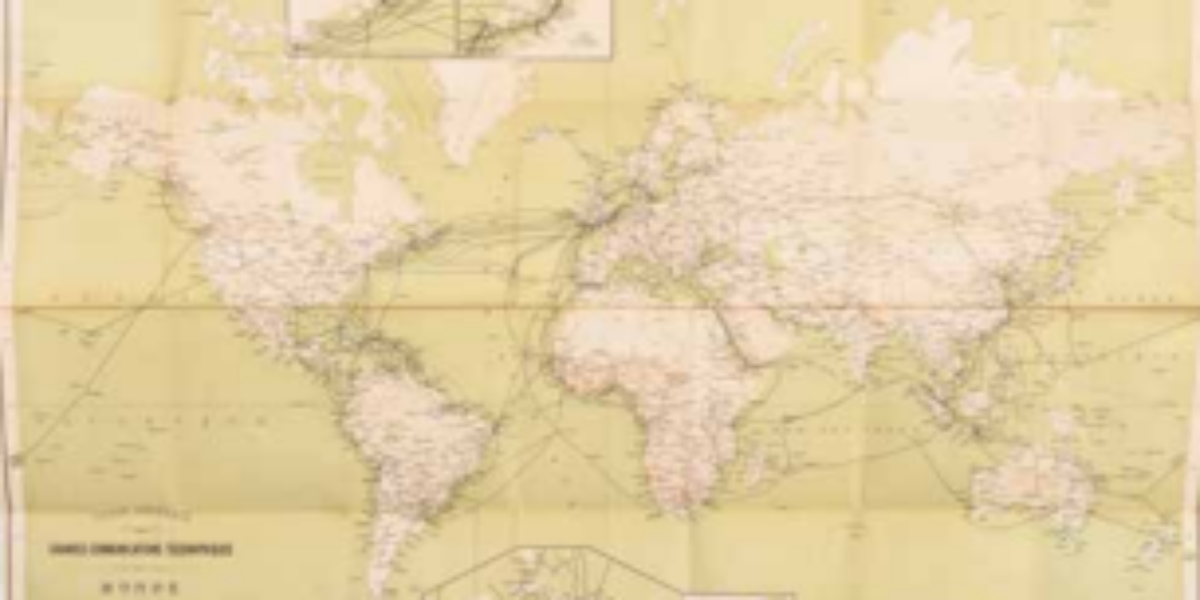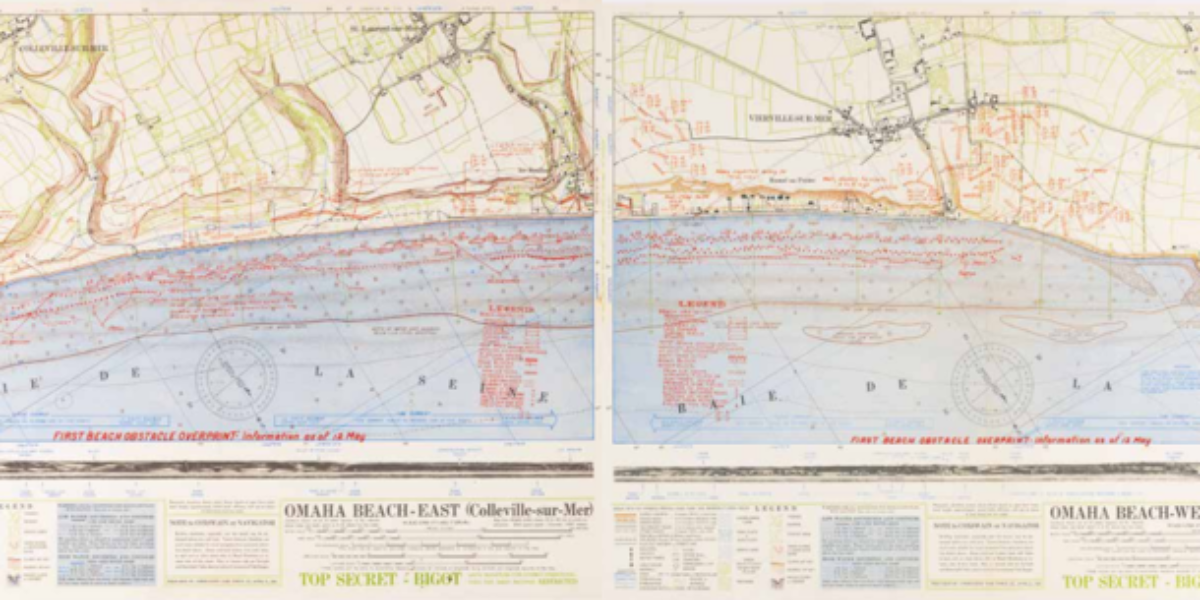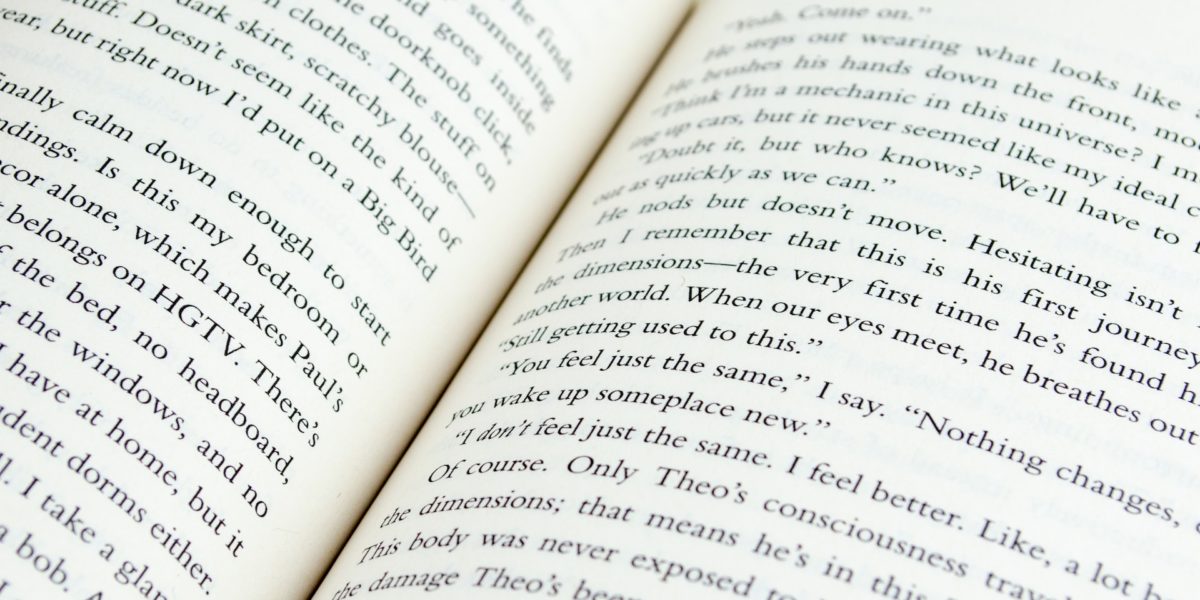Amsterdam municipal telephone This circular map of Amsterdam with the Westertoren as its centre shows for each neighbourhood where the telephone lines continue above ground: the take-off points. Although most connections are still within the ring of canals, the network has spread further into several districts.
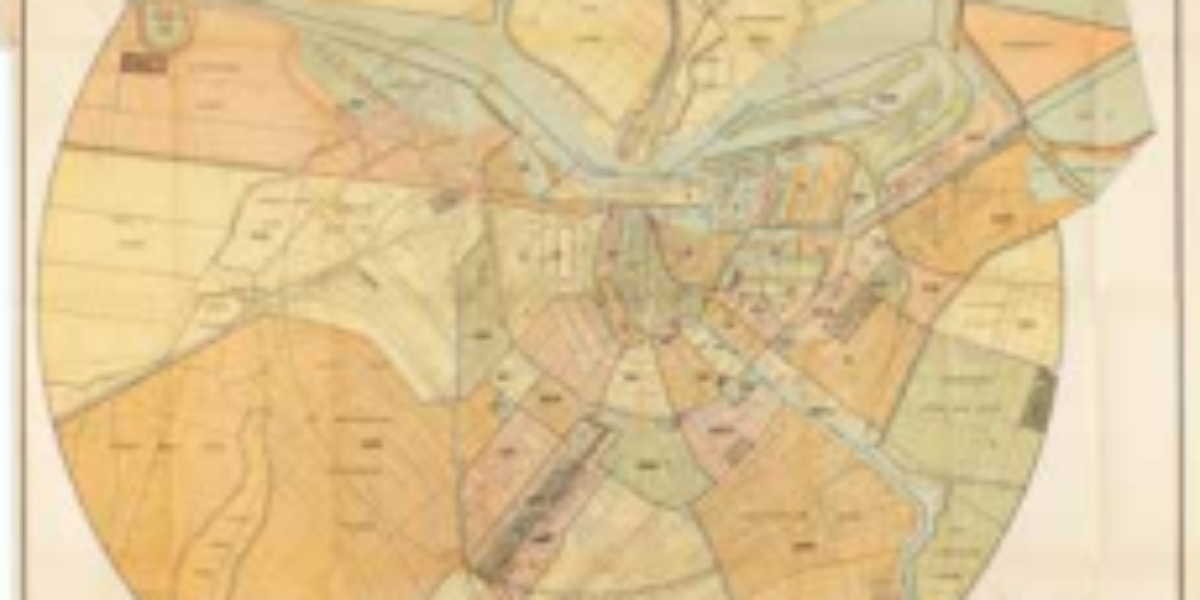
Baroque internet map This internet map visualises the worldwide web and documents the most popular websites of 2021-22. Thousands of websites are presented as ‘countries’ and grouped with similar websites into ‘regions and continents’. Their features, services and creators are labelled as ‘cities’. The stronger their mutual links, the closer the websites are to each…
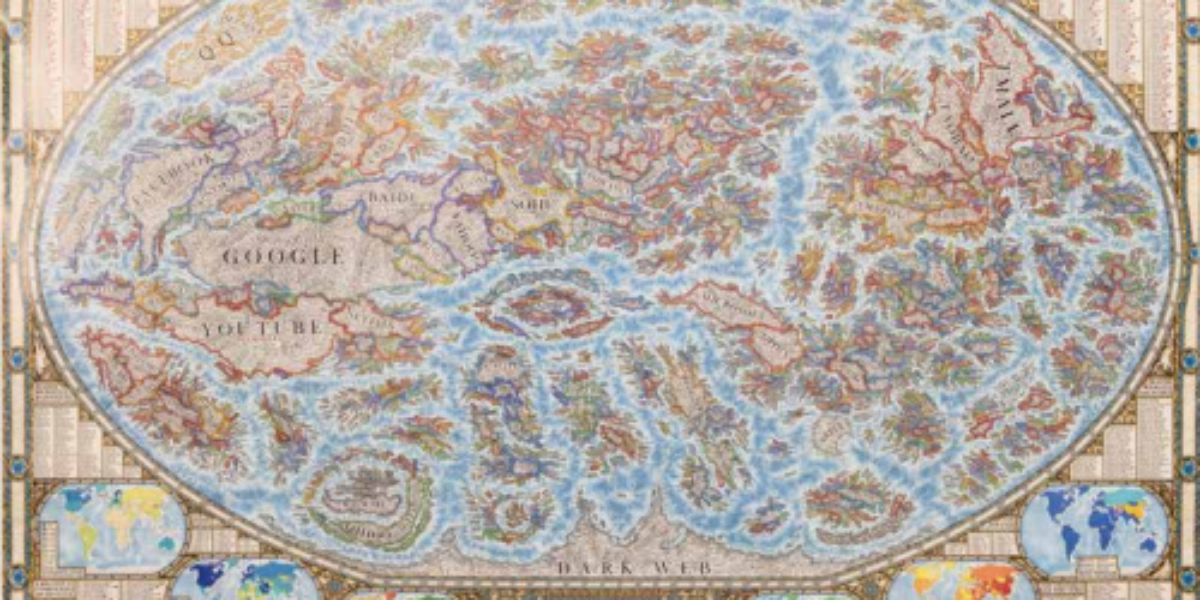
Universal atlas The encyclopaedic geographer and self-taught cartographer Philippe Vandermaelen is the creator of the Atlas Universel, the first world atlas with 400 maps on the same scale. Here you can see the overview sheet for the 76 sheets of North America. He then publishes an Atlas de l’Europe on 165 sheets, with a scale…
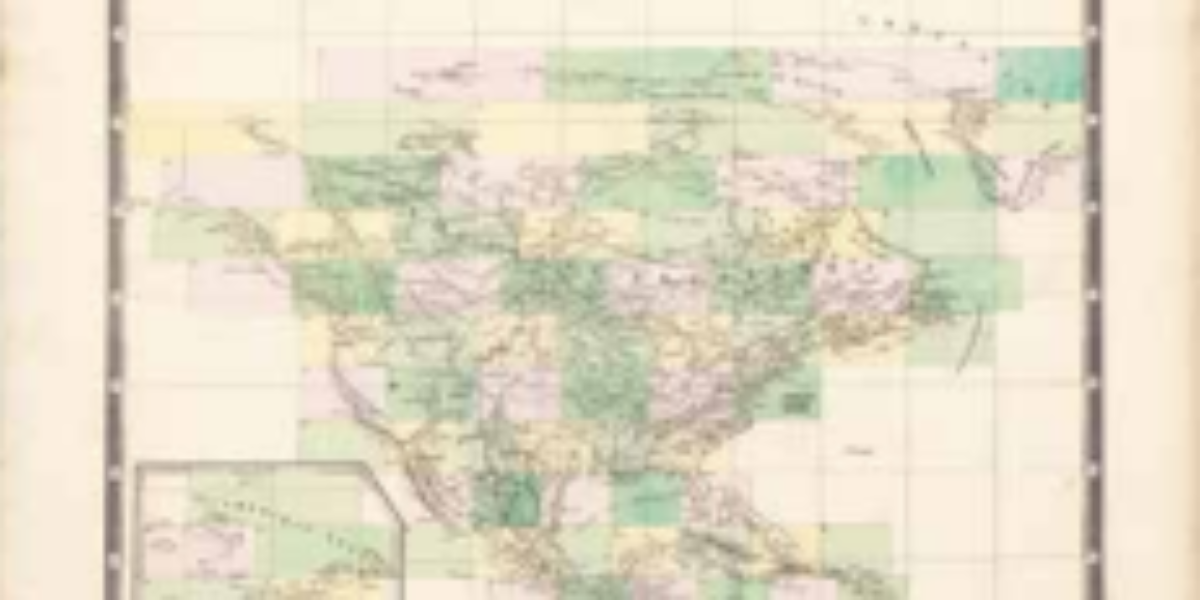
International maps of the world In 1891, the ‘International Map of the World’ project was launched to provide ‘a politically neutral representation of geographical facts’. Only decades later an agreement was reached on the Greenwich prime meridian, while the metric system was used for scale. When this utopian project was finally completed in 1986, its…
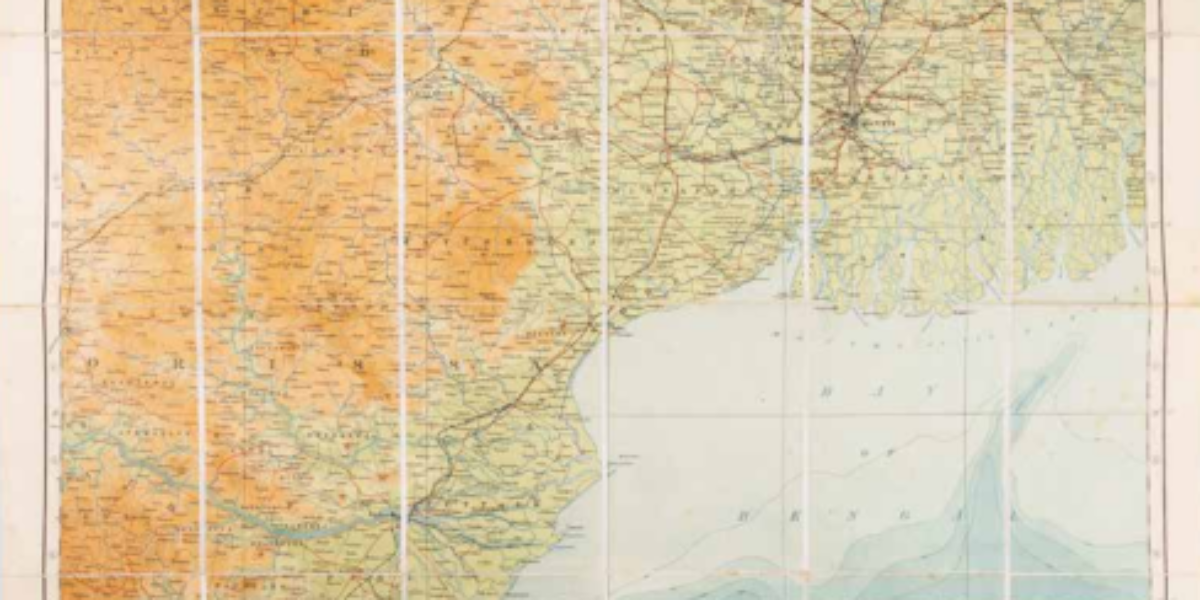
Quarter turn for the United Nations This boat flag with the United Nations emblem presents a world map centred on the North Pole, surrounded by two olive branches symbolising world peace. This is the second version from 1946, rotated a quarter turn clockwise to avoid the appearance of favouring the United States.
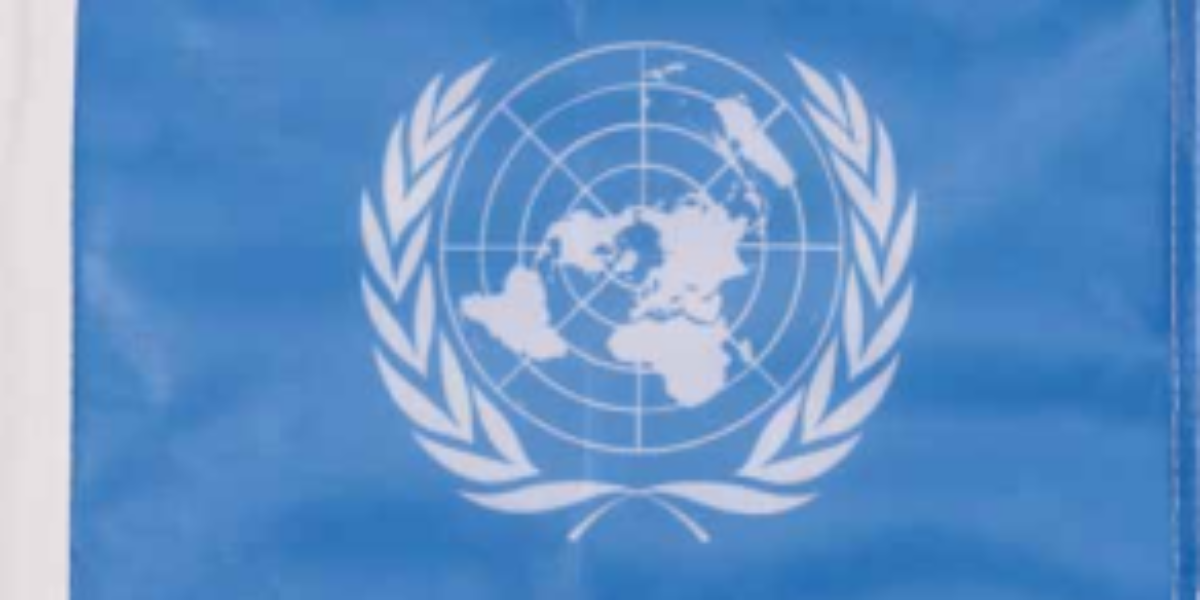
Glocalisation of cruise weapons October 2001, US, British and allied forces, together with the Afghan Northern Alliance, launch their offensive against the Taliban, Bin Laden’s supposed protectors. In the process, the concrete airstrip of Shindand airbase is also hit by cruise missiles (see arrows in this aerial photo). This attack is not based on large-scale…

Noise pollution Manhattan Monochrome maps here locate and classify 40,412 noise complaints in Manhattan in 2012, which came in through the city’s complaint line. This thematic map by Brooklyn-based designer Karl Sluis is not based on a simplified topographic map like Google Maps. His visualisation of mass data creates an overview map of the “noisiest…
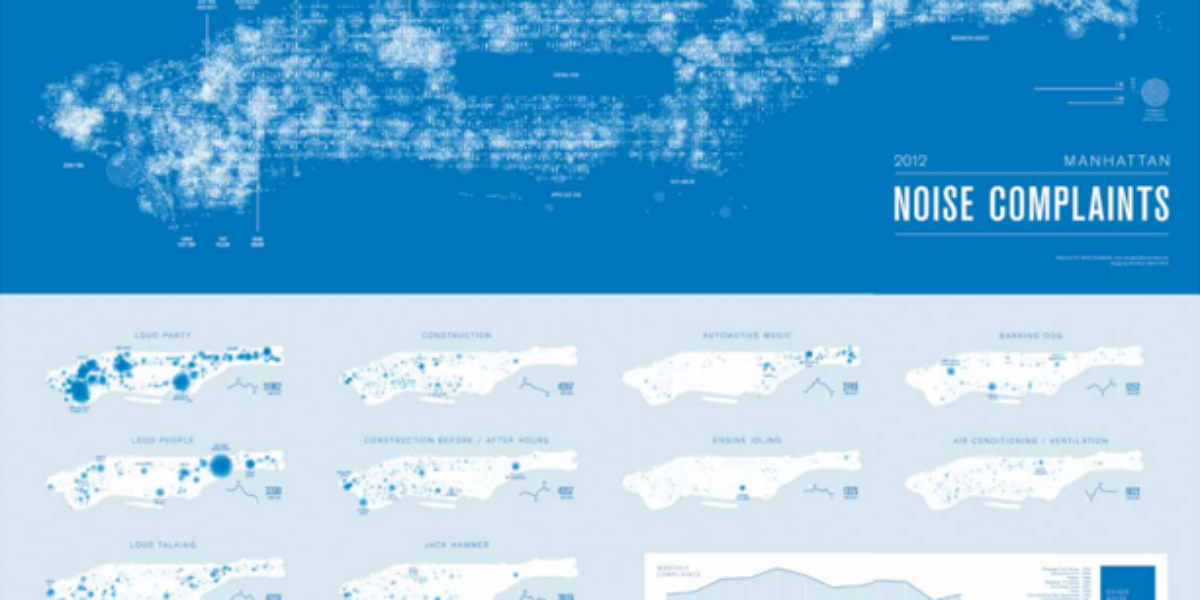
Melting roof of Europe Many of the extensive glaciers depicted on this late 19th-century Alpine map, represented by the blue fields, have disappeared altogether, as evidenced by the Zapport Glacier (2b). During a dry summer, 20% of the Rhine’s flow comes from glacier meltwater, but what will happen in the future as glaciers continue to…
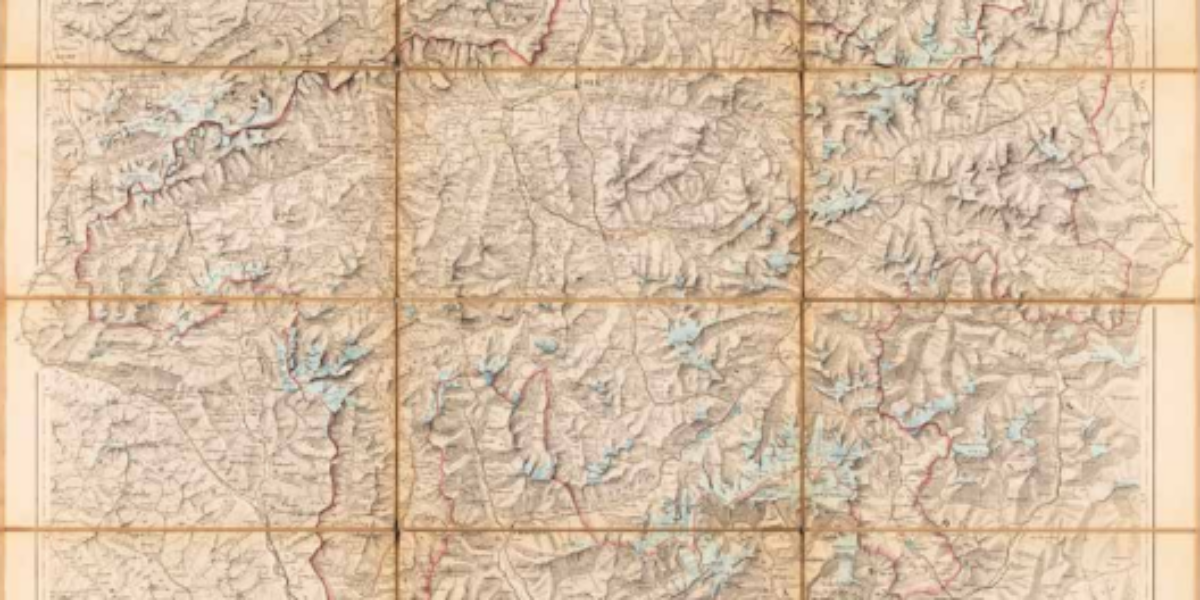
Water as an ineffective means of defence In the Franco-German War of 1870-1871, Strasbourg, one of France’s most modern fortresses, was besieged by troops from Baden and Württemberg. The extensive damage was attributed to the artillery shelling employed during the siege. This highlighted the vulnerability of traditional, static fortifications in the face of a highly…

The Rhine as a modern transportation route This atlas served as a navigational tool for ships in a time predating the advent of radar and GPS technology. Over the course of a century, the Rhine River underwent modifications to accommodate modern navigation requirements. It wasn’t until the salt discharges from Alsace, which continued until 1998,…
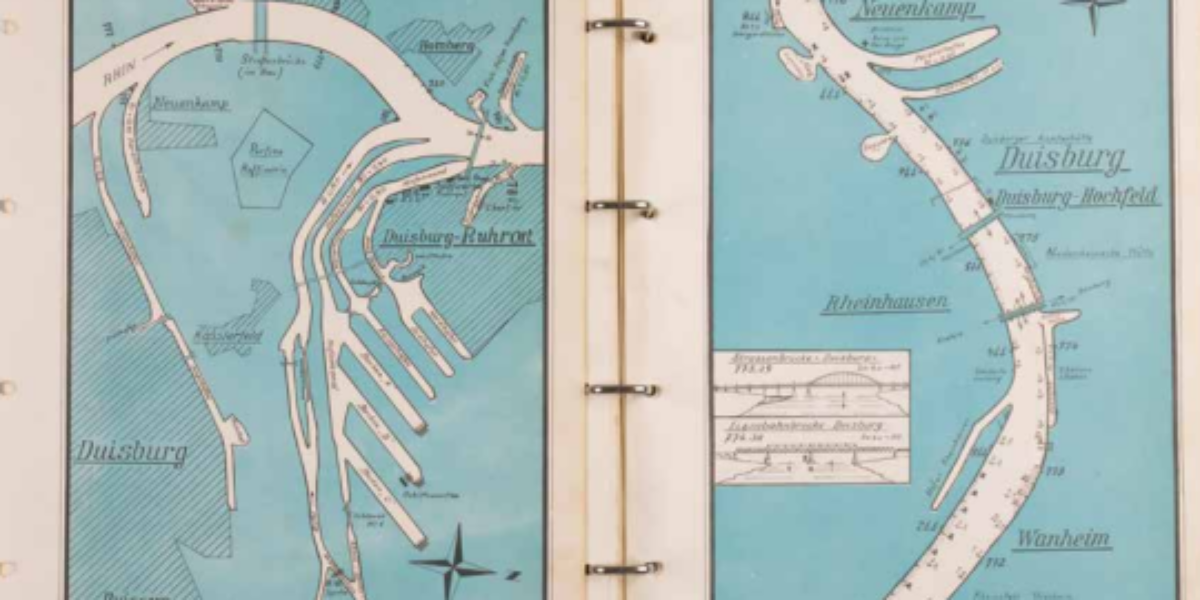
The power of the swelling Rhine During periods of high water levels in the Rhine, the river valley experiences inundation. This flooding highlights the size of the valley, despite the protective dikes built along it for centuries. The changing climate and the loss of upstream catchment basins cause larger volumes of water to occasionally flow…
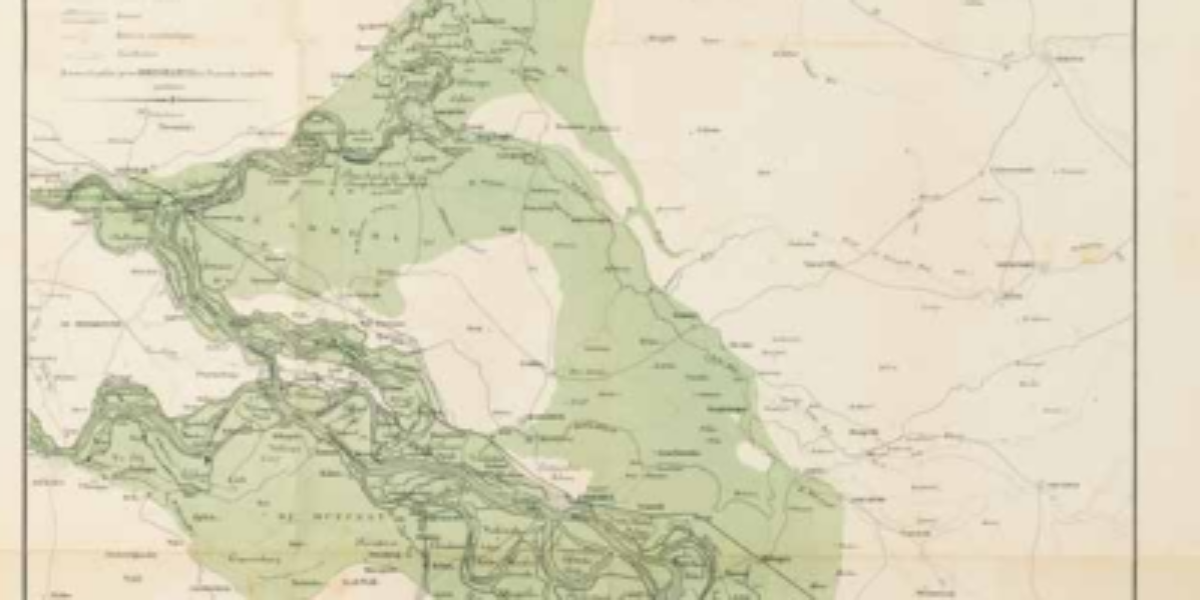
Room for the river, everyone wins In 1995, 250,000 people had to be evacuated from the Betuwe region due to the precarious state of the dikes. This event led to a shift in approach: The “Room for the River” initiative is a billion-dollar investment program with the aim of creating additional space for the Rhine…
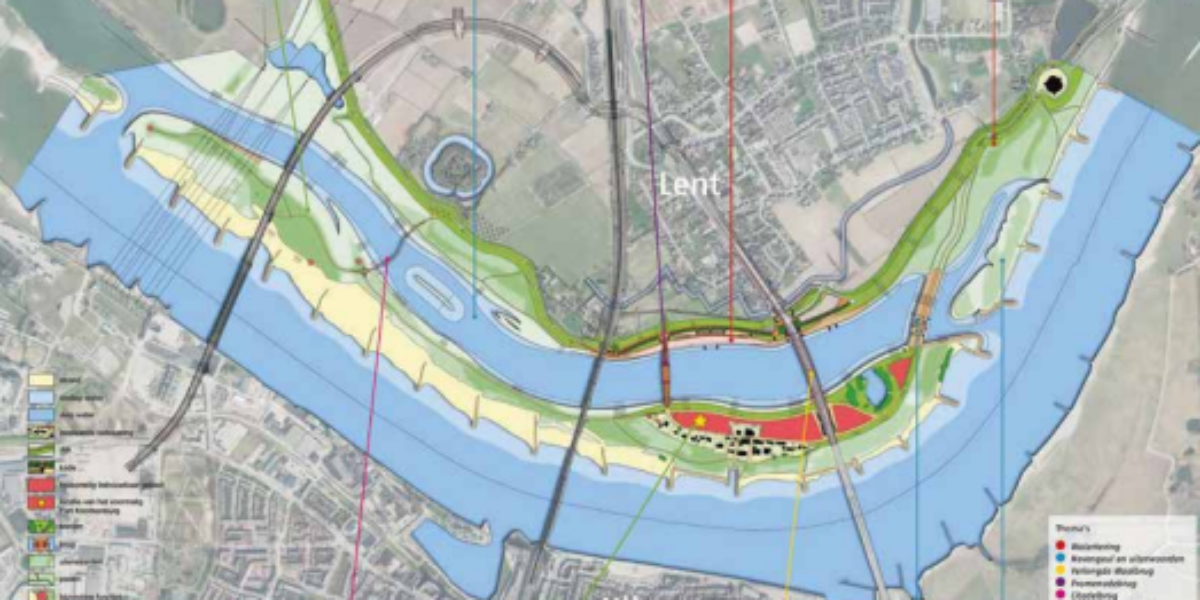
Normalisation and regulation of the Rhine From 1765, the Rhineland surveyor and cartographer Melchior Bolstra initiated a systematic mapping of the Rhine. The river is measured in a standardised way and the symbolism on maps is normalised. This standardisation made far-reaching plans for regulation possible. The river is measured using standardised techniques, and the map…
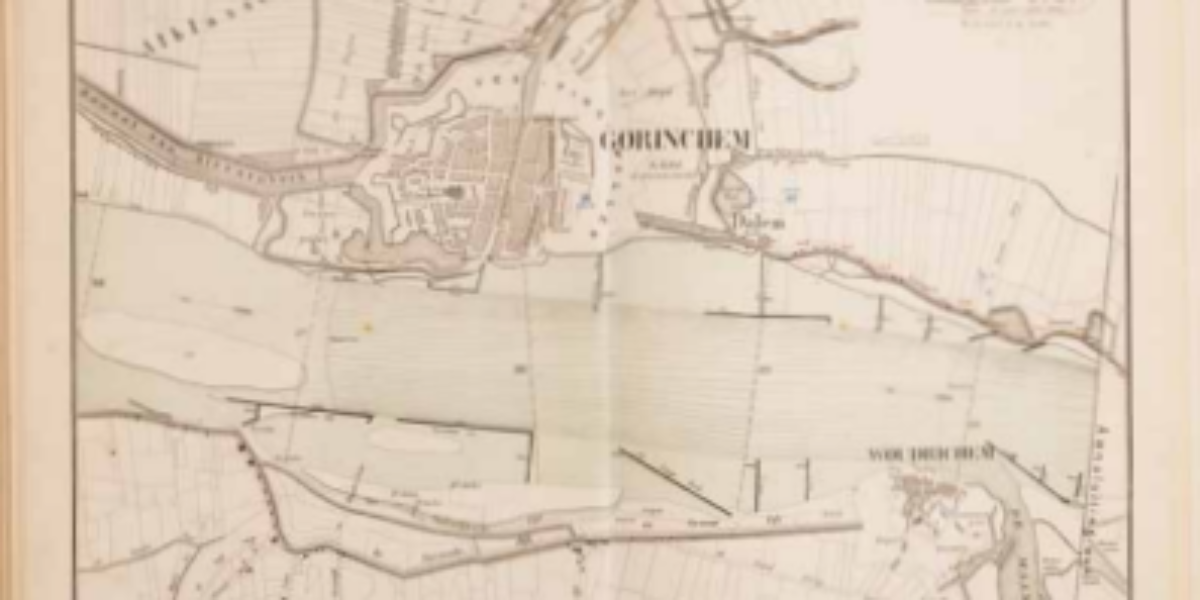
Rotterdam’s new oesophagus In the 19th century, the port of Rotterdam faced an increasing problem regarding accessibility as ships increased in size. Engineer Pieter Caland develops an audacious plan: create the shortest possible connection through the Hook of Holland and construct a dam at the confluence of the Old and New Maas rivers. The natural…
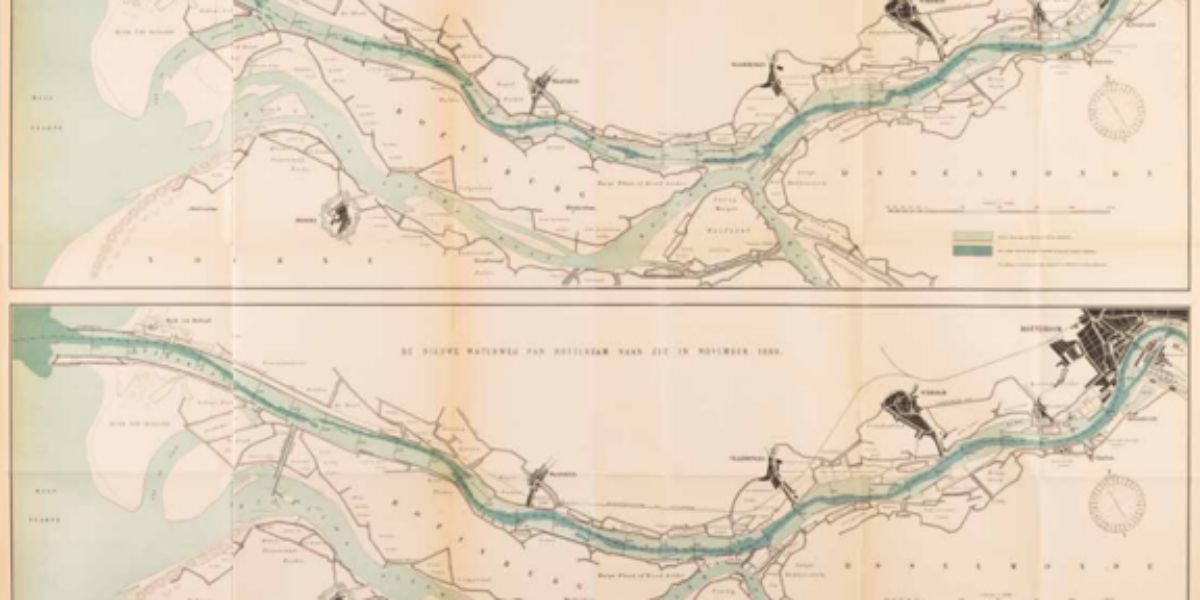
Endangered drinking water as a public good The Netherlands currently has ten public drinking water companies serving the entire country. In 1940 those companies numbered in the hundreds. In many municipalities there were only private wells, while the various sources of drinking water in a previous era were striking: Dune water, surface water around Rotterdam,…

Disaster engulfs southwestern Netherlands Immediately after the flood disaster, a multitude of publications were initiated, among them this survey map depicting the flooded region. The purpose was to raise funds for the victims of the disaster. The map’s visual impact is intensified by the numerous crosses and arrows, adding to its dramatic effect. The Disaster…
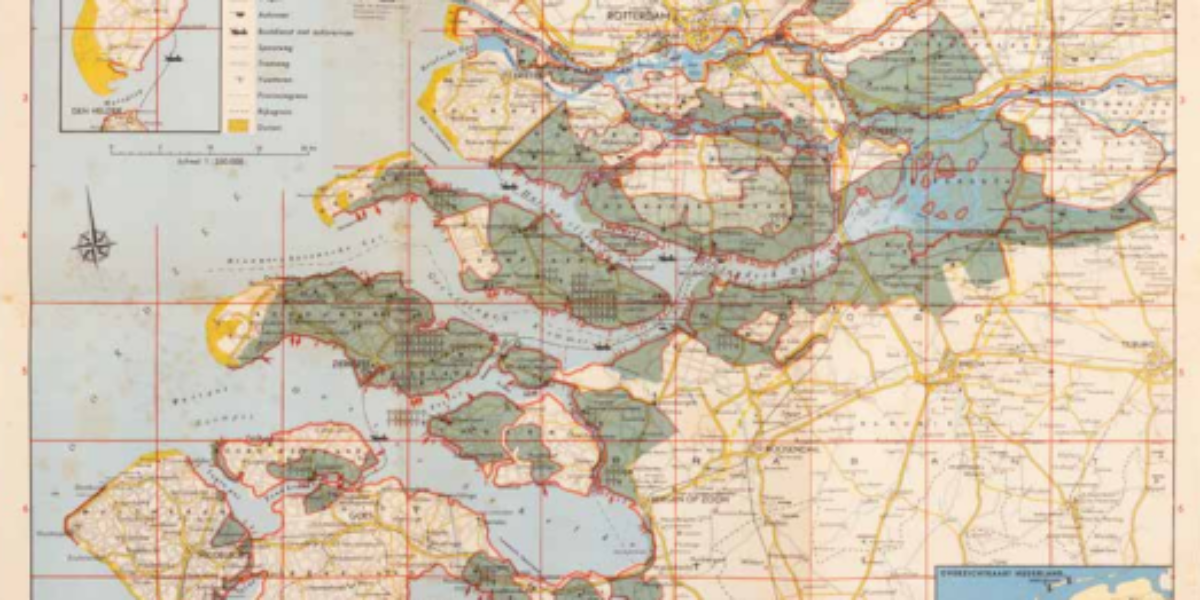
Shaky illusion of social engineering As the Delta Works gains momentum, the field of water management glows with confidence. This school record illustrates that a significant portion of the Netherlands is situated below sea level or at risk from river water, emphasising that the country’s water situation is “under control.”
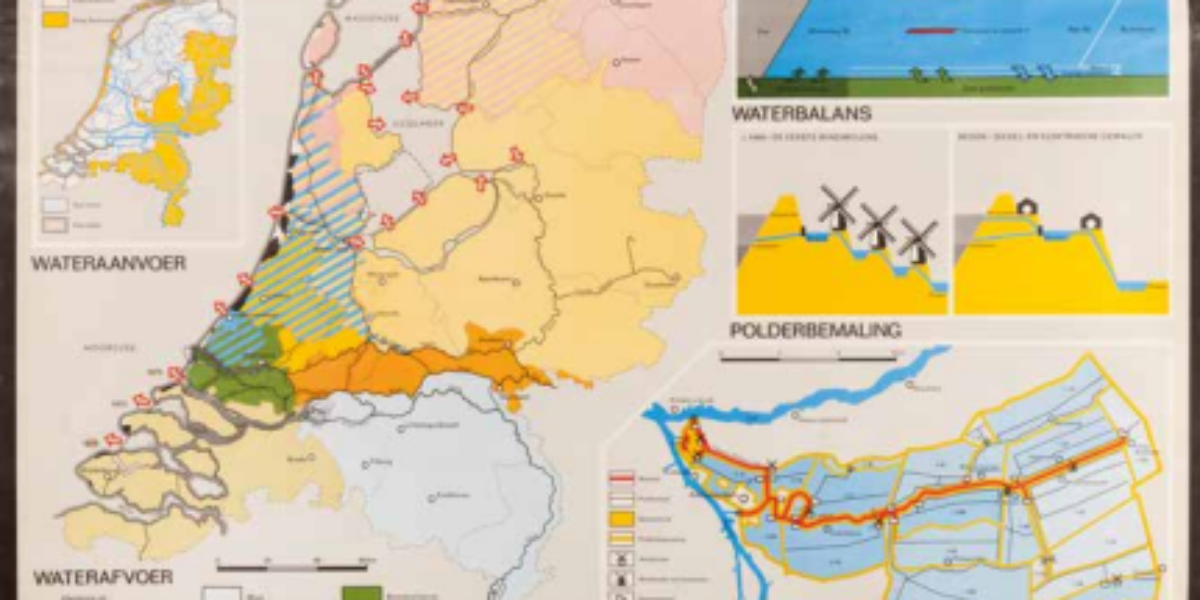
Netherlands: terminus of river systems A fresh view on our nation is essential: viewing the Netherlands as the terminus of river systems. This explains the unconventional orientation of this map, where east is depicted at the top. This represented a new understanding of the Netherlands not as an isolated entity but one greatly affected by…
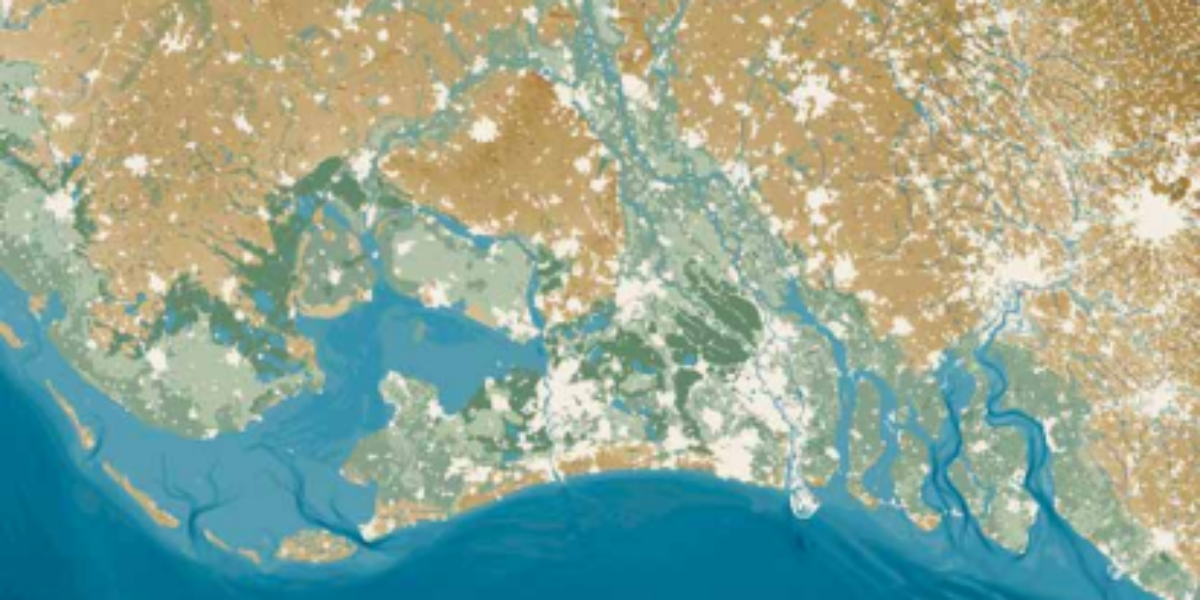
The sea, a colony for our energy? The national government plays an important role when it comes to energy, especially in times of climate change and geopolitical tensions in Europe. The National Environmental Vision takes a leading role in managing this situation. The transition to renewable energy sources is progressing rapidly: by 2023, a large…
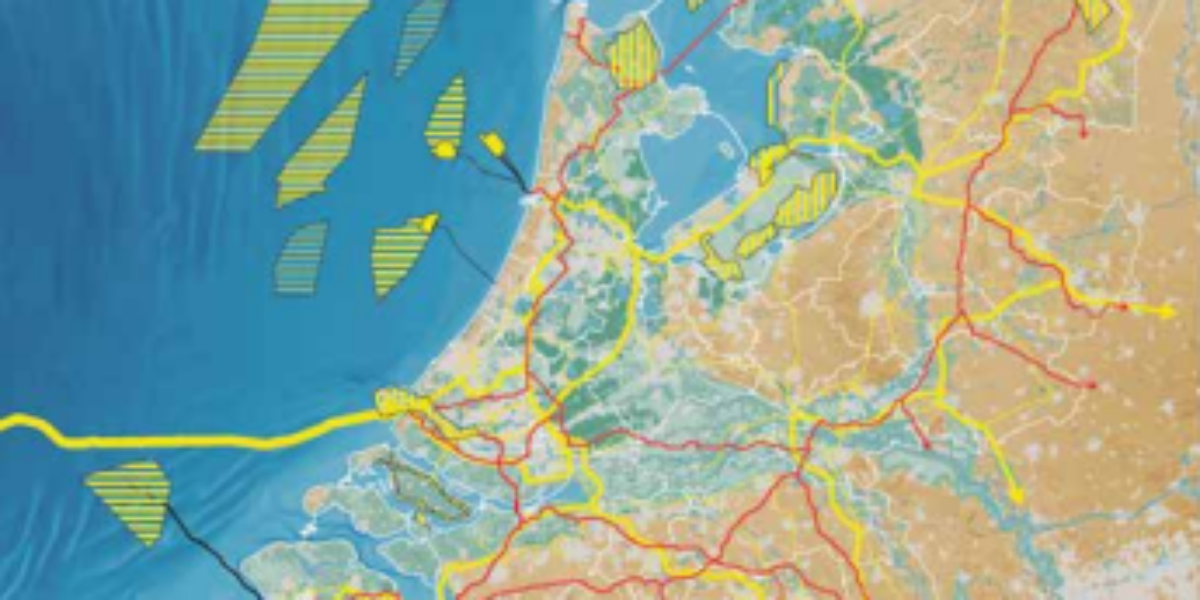
Water scarcity as a new problem In the near future, climate change is amplifying the intensity of extreme weather events. Despite a 10 to 15% increase in precipitation since the 1960s, we are experiencing drier springs and summers. This shift has consequences, illustrated by this interactive map: by the end of September 2020, large regions…

We do not accept drought and salinization During long dry periods, the western part of the Netherlands increasingly experiences problems. As a result of the deepening of the Nieuwe Waterweg – Nieuwe Maas river, saltwater penetrates to the inlet pumping station near Gouda during low Rhine discharge. In increasingly hot summers, the water evaporates faster…
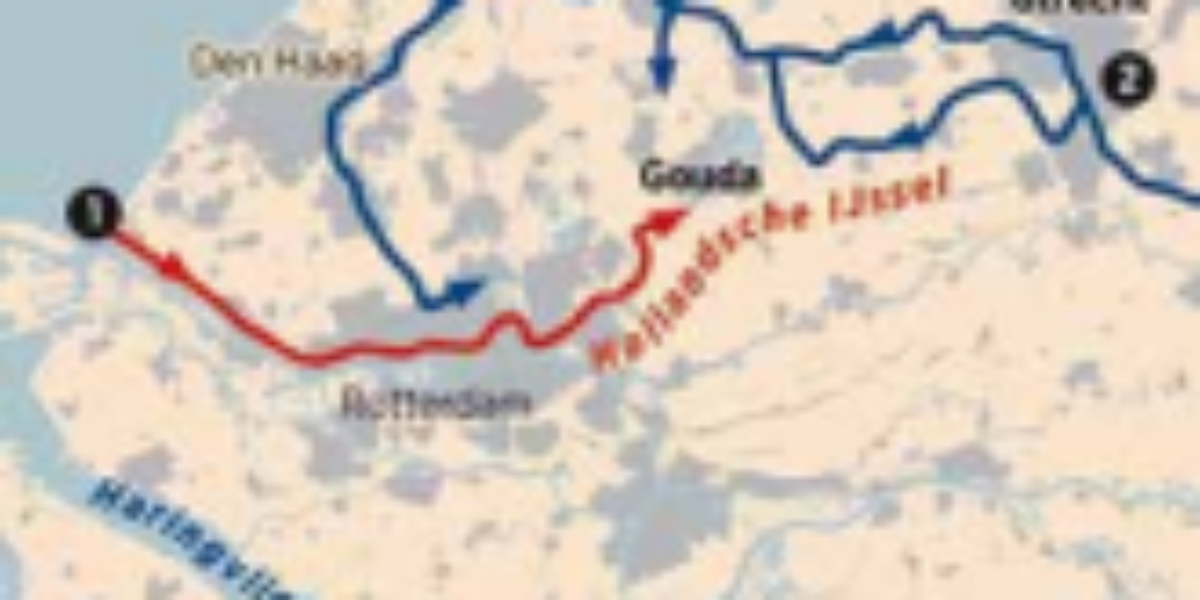
Weather is unpredictable, but climate typically appears more stable. Climate change historically involves slow shifts, from ice ages to warmer eras. The extensive use of fossil fuels has disrupted this natural progression. Since the industrial revolution, the climate’s behavior has shifted from occasional local heatwaves to a global trend of warming. The text on the…
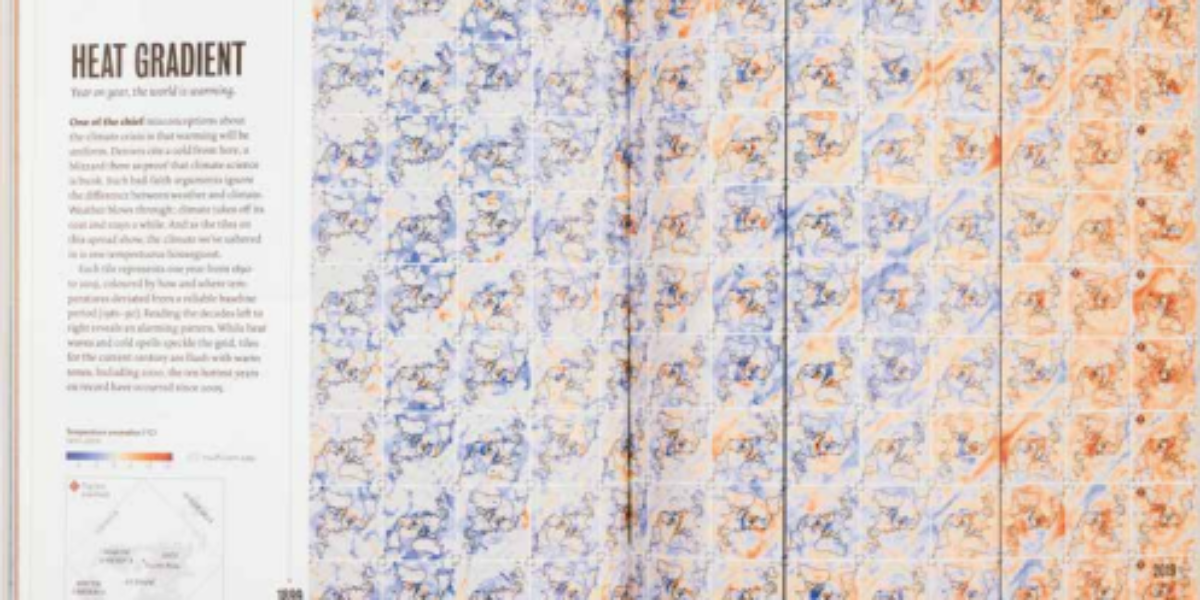
Ethiopia: beginning of fascist imperialism Mussolini’s fascist regime seizes power in Italy in 1922, marking the start of an anti-democratic wave. This regime aimed to resurrect the concept of the Mare Nostrum, envisioning the Mediterranean Sea as an inland sea of a new Roman empire, as depicted in the second card. To prevent conflicts with…
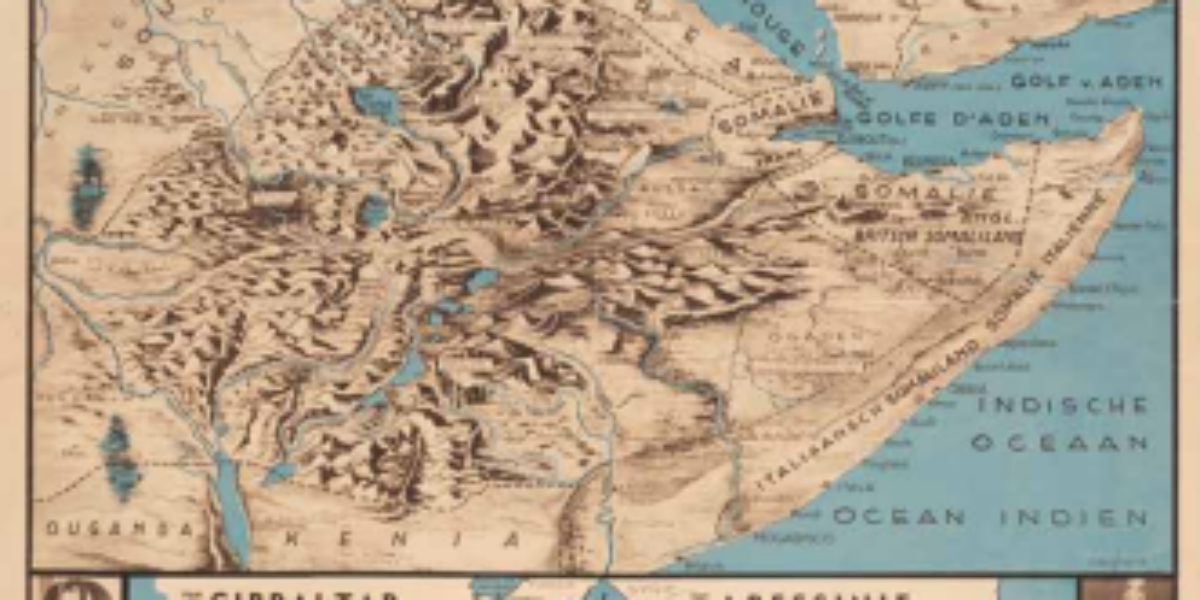
Saar German again: revenge on Versailles Following the end of World War I, Germany must make several concessions: ceding Alsace-Lorraine, accept the establishment of a large demilitarized zone in West Germany, and relinquish control of the new Saar sub-region to France. Just 15 years after the Treaty of Versailles, in 1933, after Adolf Hitler’s seizure…

Dutch resistance to fascism In the Netherlands, the Social Democrats issued warnings about the repression occurring in concentration camps and prisons in Nazi Germany, cautioning that it could serve as a precursor if the National Socialist Movement were to gain power. At the time, there was already public awareness of the network of concentration camps….
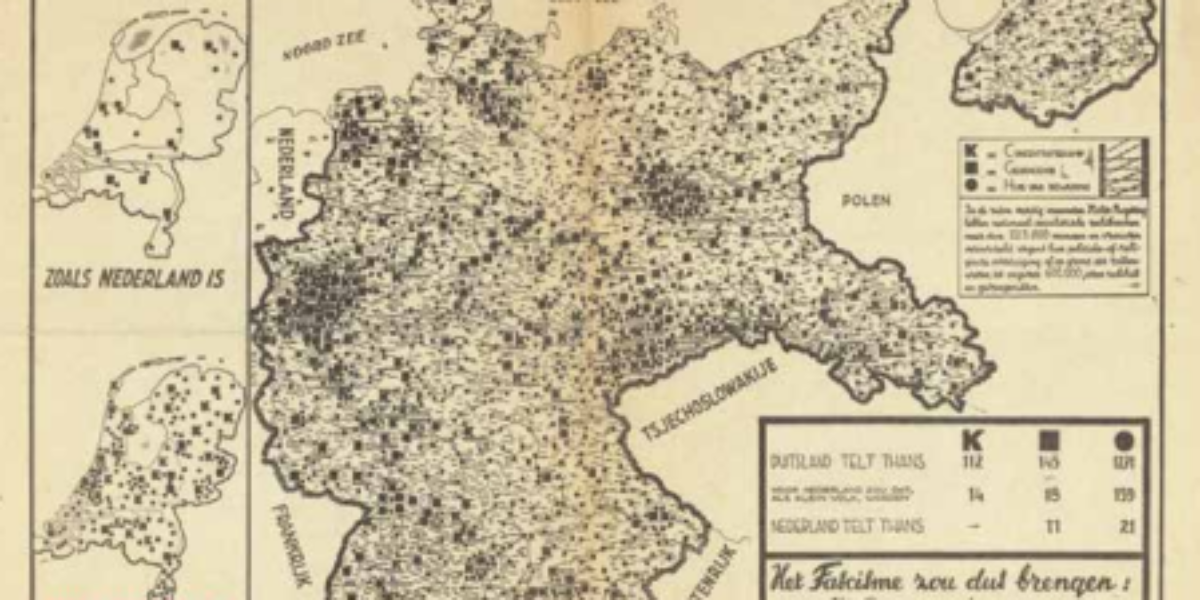
Japan’s war of conquest in China This map illustrates the Japanese advance during the Second Sino-Japanese War (1937), referred to euphemistically as the “North China Incident” in Japan. However, the map is focused more on conveying the (unfounded) concerns of potential Soviet intervention in the conflict and possible air attacks on Japanese islands (indicated by…
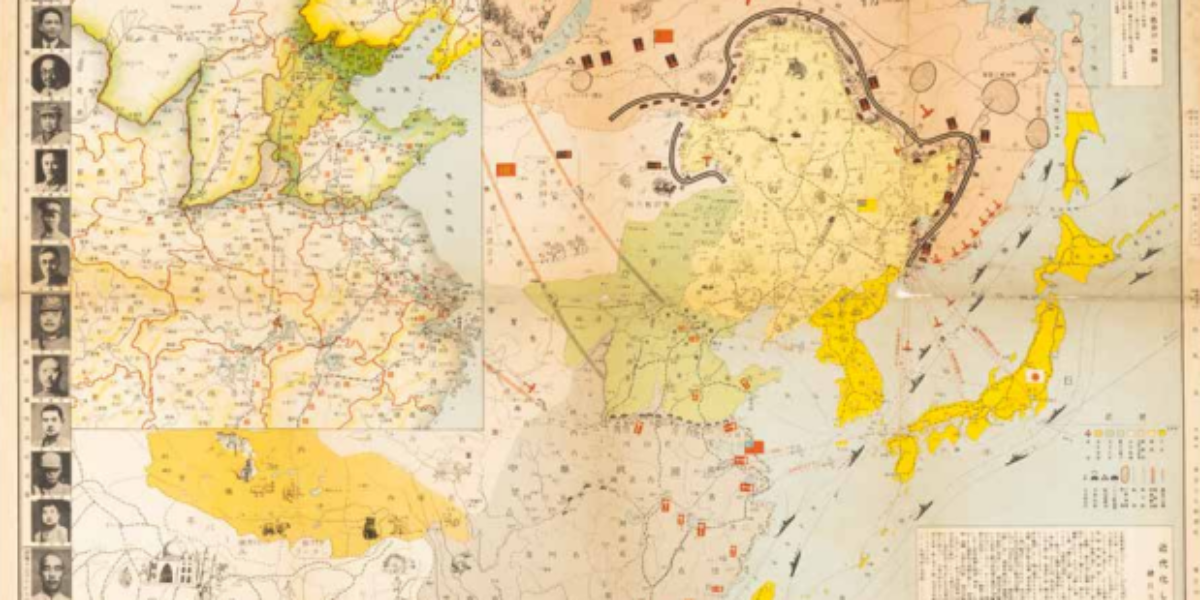
Left-wing America against encroaching fascism Ken was an American avant-garde magazine with a short-lived existence of a year and a half. This publication included Ernest Hemingway among its writers, and took a strong stance against what it viewed as the “enemies of freedom,” portraying these adversaries as a modern-day Black Death. This humorous cartoon illustrations…
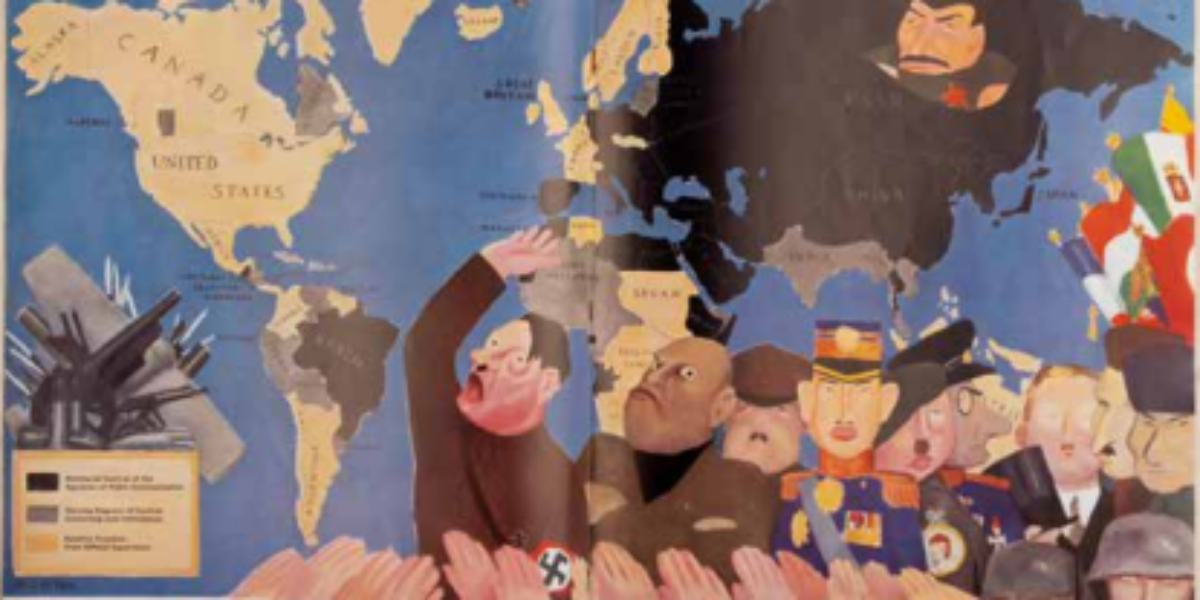
The ‘betrayal’ of Munich cashed in The “Anschluss” of Austria, which led to the region being referred to as the province of Ostmark within a newly expanded Großdeutschland, garnered significant approval from a majority of the population. Following this event, the “Führer” wastes no time – with the agreement of the British and French –…
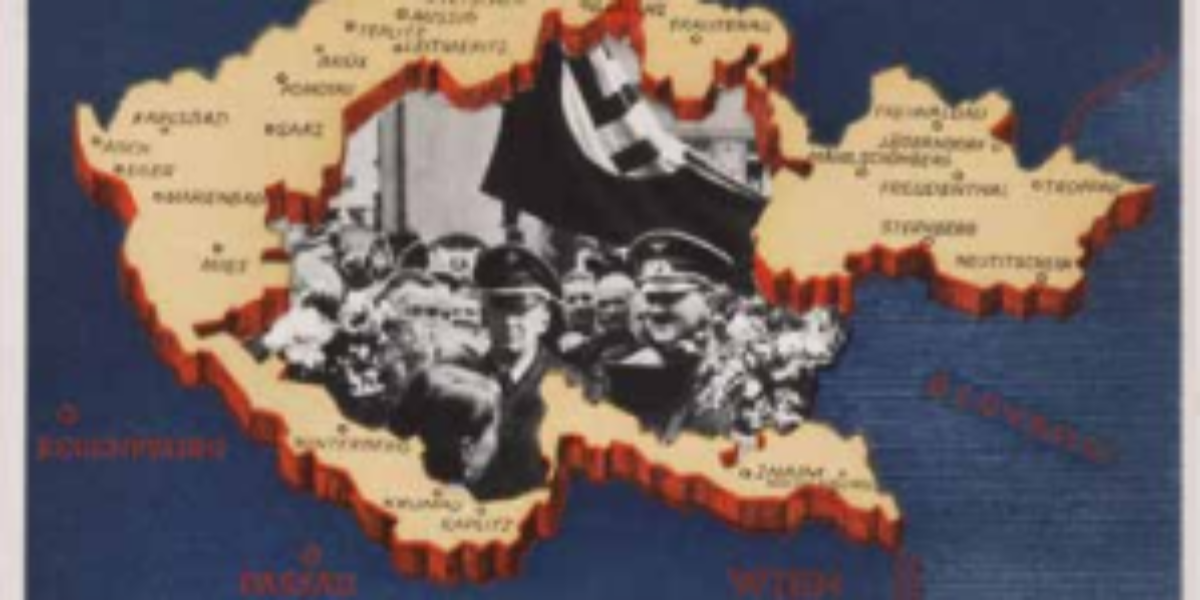
The Dutch ‘officer’s briefcase‘ During the mobilisation of 1939, every Dutch officer was issued a case of maps covering the entire Netherlands at a scale of 1:50,000, with 1 cm on the map representing 500 m in the field. This scale was chosen because it allowed for all the necessary spatial details to be represented….
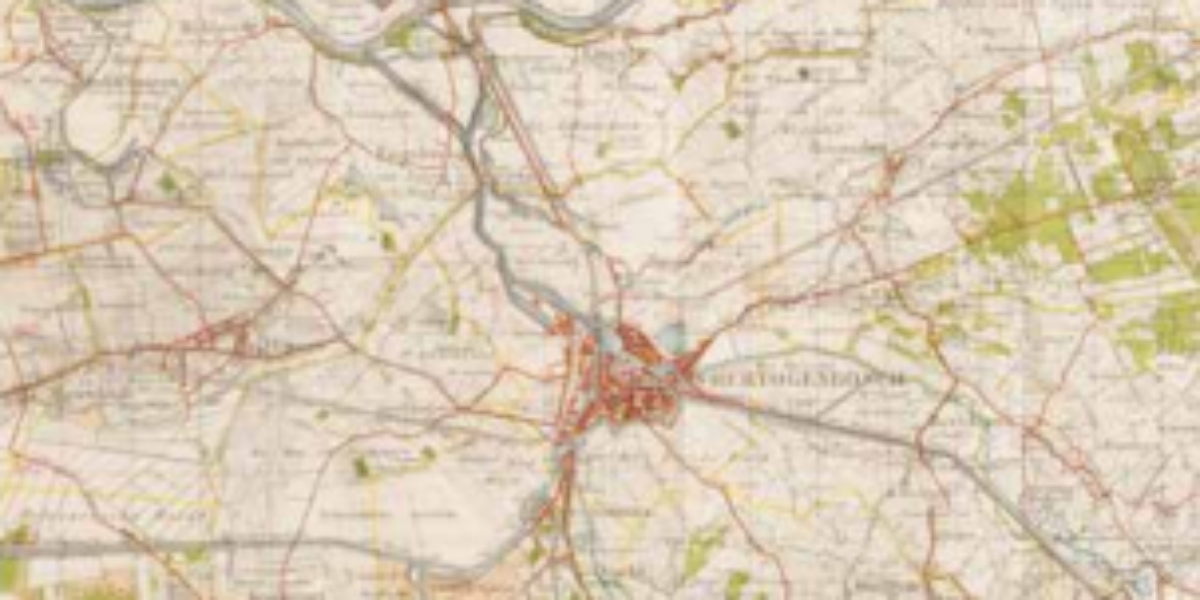
Molotov-Ribbentrop pact divides Poland On August 23, 1939, the foreign ministers of Nazi Germany, Von Ribbentrop, and the Soviet Union, Molotov, signed a nonaggression treaty in Moscow. However, a secret protocol was added in which the two powers had already divided East Central Europe into their respective spheres of influence. As seen on this map,…
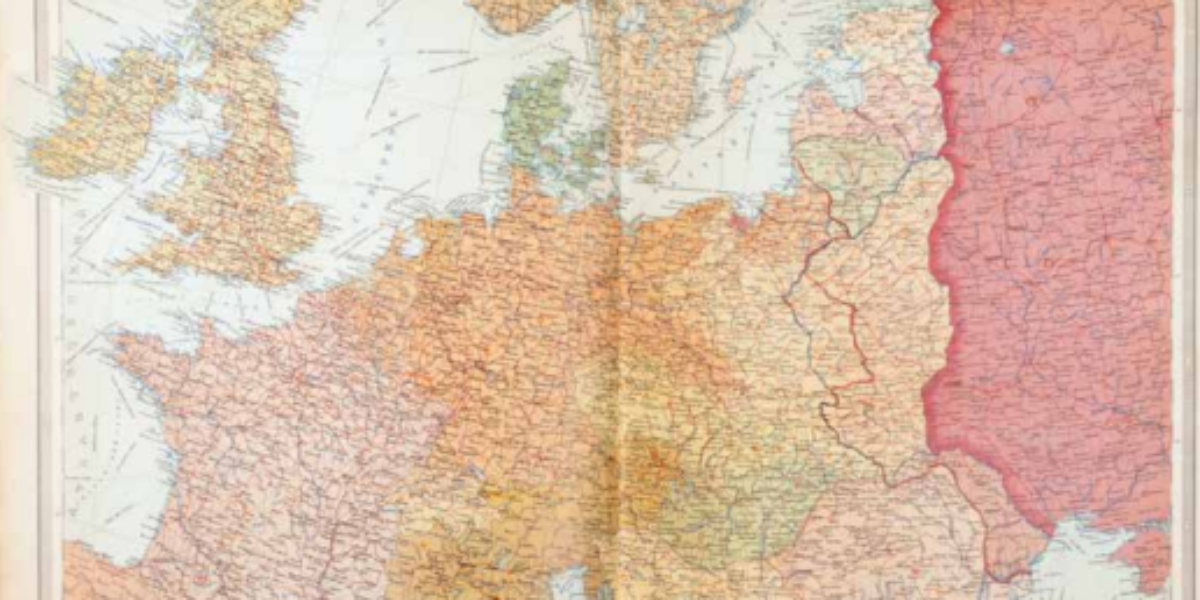
Bombardment as basis for modernization This is the first map published of Rotterdam shortly after the devastating terror bombing that occurred on May 14, 1940, resulting in the complete destruction of the city centre. The scale of the devastation is extensive, yet despite the destruction, many buildings are left standing, only to disappear at a…
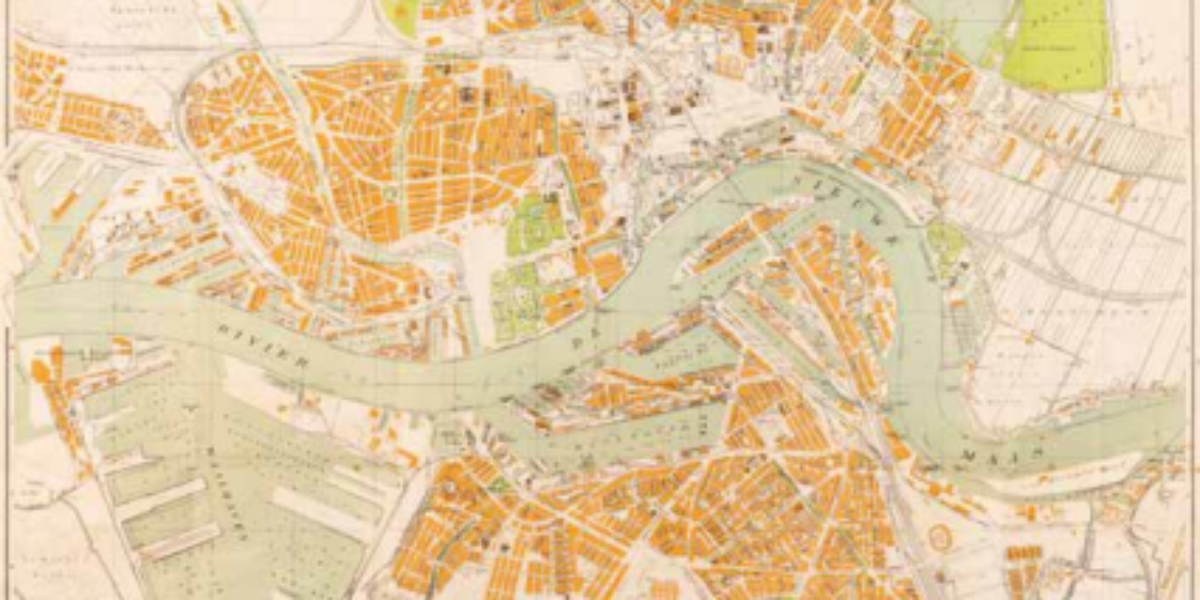
Flash war waltzes over Western Europe The divisions detailed on this map signify the rapid conquest of not only the Netherlands but also Luxembourg and Belgium. France is also depicted as facing a swift defeat. According to German propaganda, this march is highlighted in Map 10d, with an emphasis on the cooperation between infantry, tanks,…

French prisoners of war in Greater Germany The legend accompanying this map notes that there are 47 Oflags (Offizierslager, designated for officers) and 60 Stalags (Stammlager, for non-commissioned officers and soldiers). Yet the map lists many more camp names than indicated in the legend, and conversely, some camp names mentioned in the legend are not…

Air Battle for Britain By the time this map was published in April 1941, the planned amphibious assault on England had already been cancelled. Although the map’s red arrows suggest a dominant German advance, by this time the Luftwaffe had also suffered heavy losses in the air war, due to the intense bombing of major…
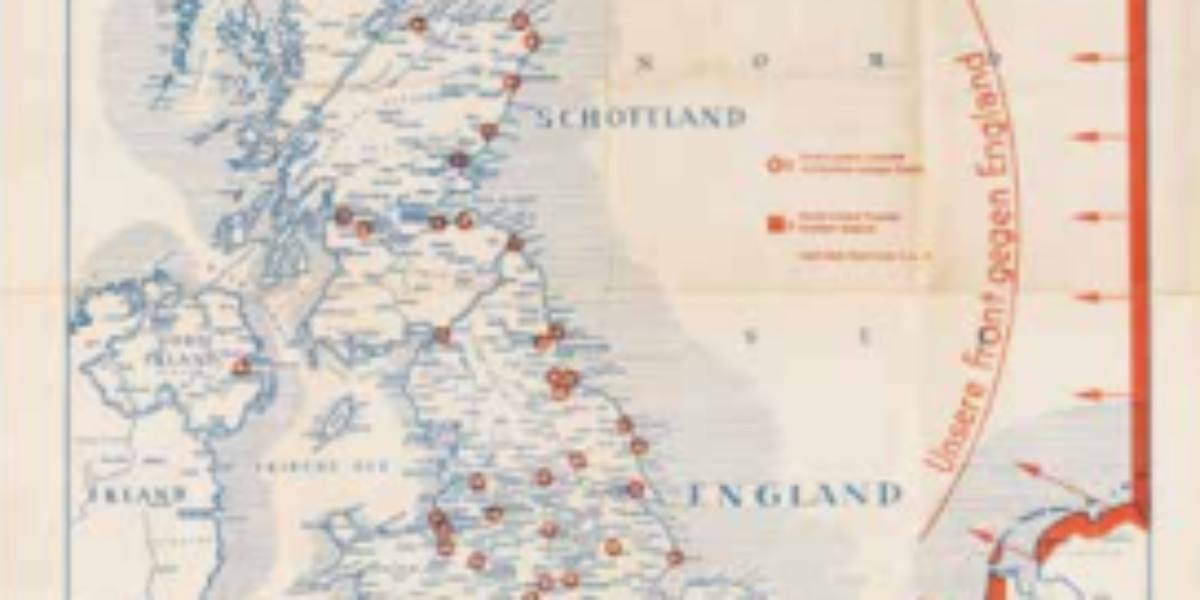
Air strike on Exeter The German army adopted this map from the British topographical service, the Ordnance Survey. The map highlights military-relevant objects such as barracks, ports, the power plant, bridges, and overpasses, and even the hospital. The navigator marks crosses where their bombs fall, but interestingly, none of the military objects are among the…
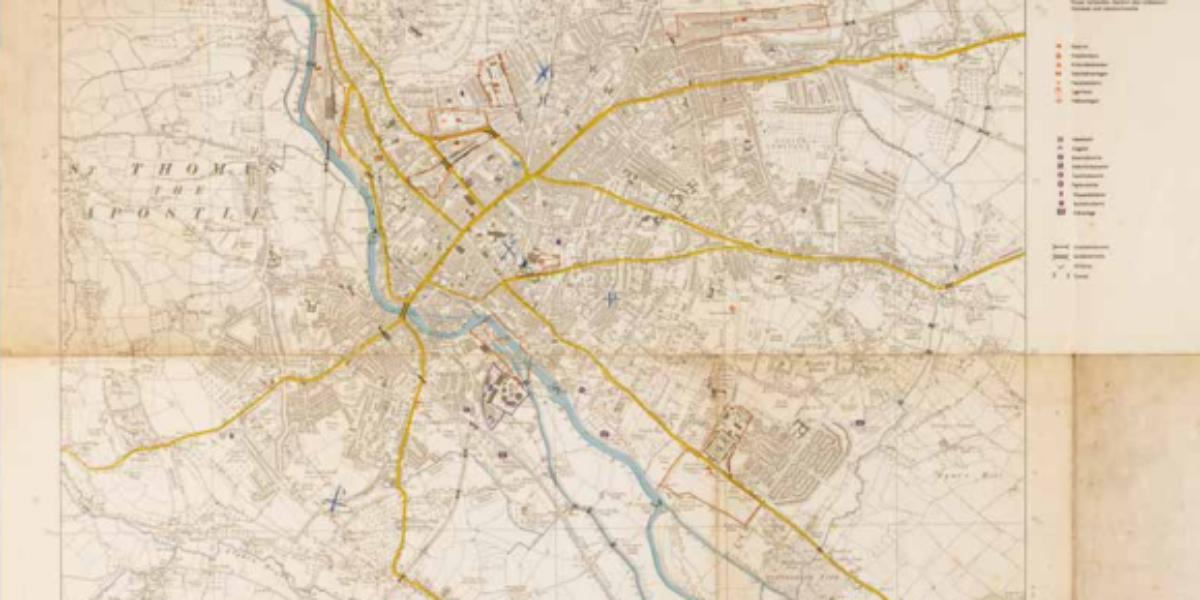
America’s war industry before the war In this modern map, the dimensions of each state are determined by their significance in the production process. The symbols’ sizes correspond to the scale of factories. This method of visualisation is groundbreaking, and for reference, Edes Harrison has included a “plain” map that displays all the establishment sites….
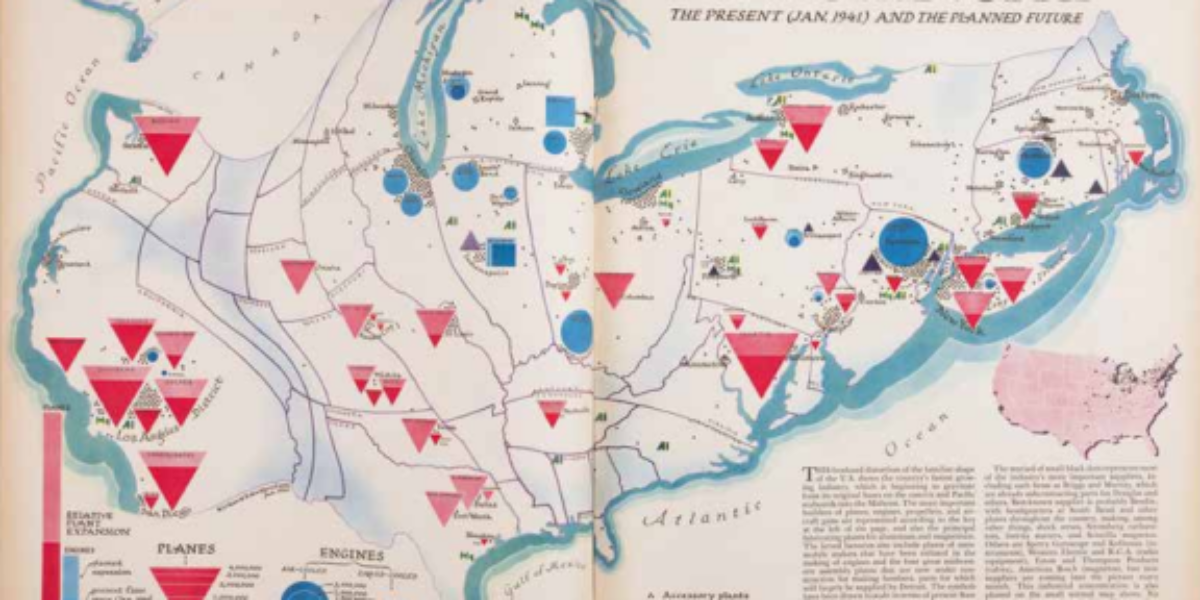
Sabotage and mass murder in Kiev On September 19, 1941, the Germans, with a force of 500,000 men, captured the city of Kiev/Kyiv following a 45-day siege. On September 24, the city centre, which had been mined by Soviet forces beforehand, including the army headquarters and Hotel Continental where German officers were staying (indicated by…

Stalingrad: turning point in the war This map isn’t exclusively a military map, but it does contain (brief) military information. In late 1942, Italian, Hungarian, and Romanian flank troops deserted, but the 6th German Army was ordered not to withdraw from Stalingrad; the city and its name are symbolicaly significant. After months of intense combat…
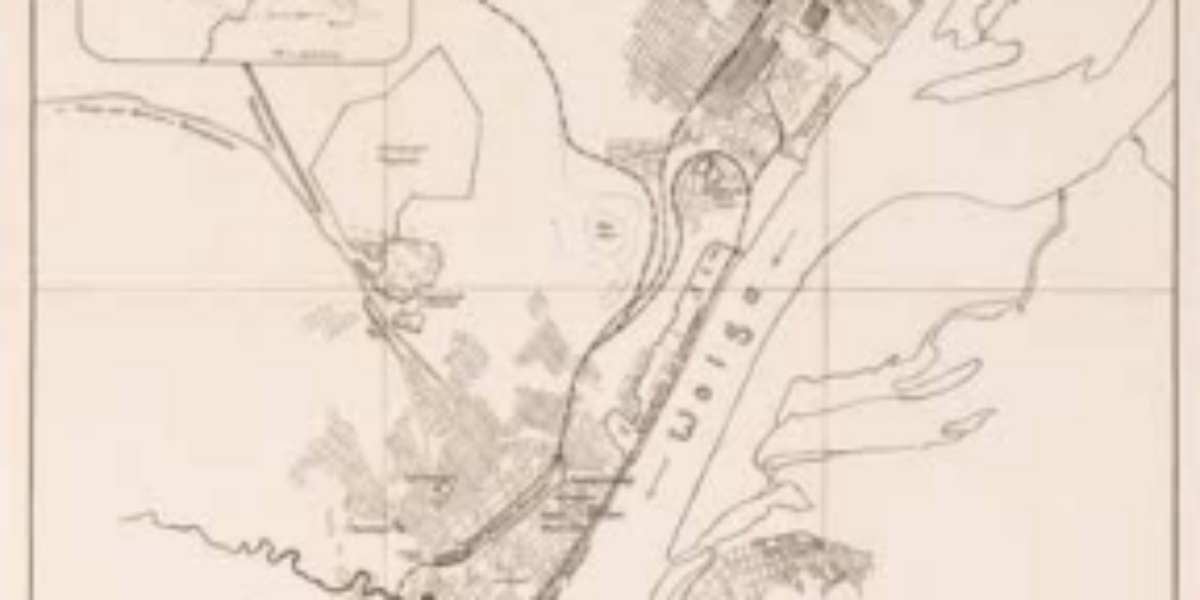
Nazi Germany loses on eastern fronts The printed background of this map provides a fairly accurate, though small-scale (1:1,500,000, 1 cm on the map representing 15 km in the field) representation of the European Soviet Union. We are focused on just three western sheets of the map, where a previous owner has inscribed in coloured…
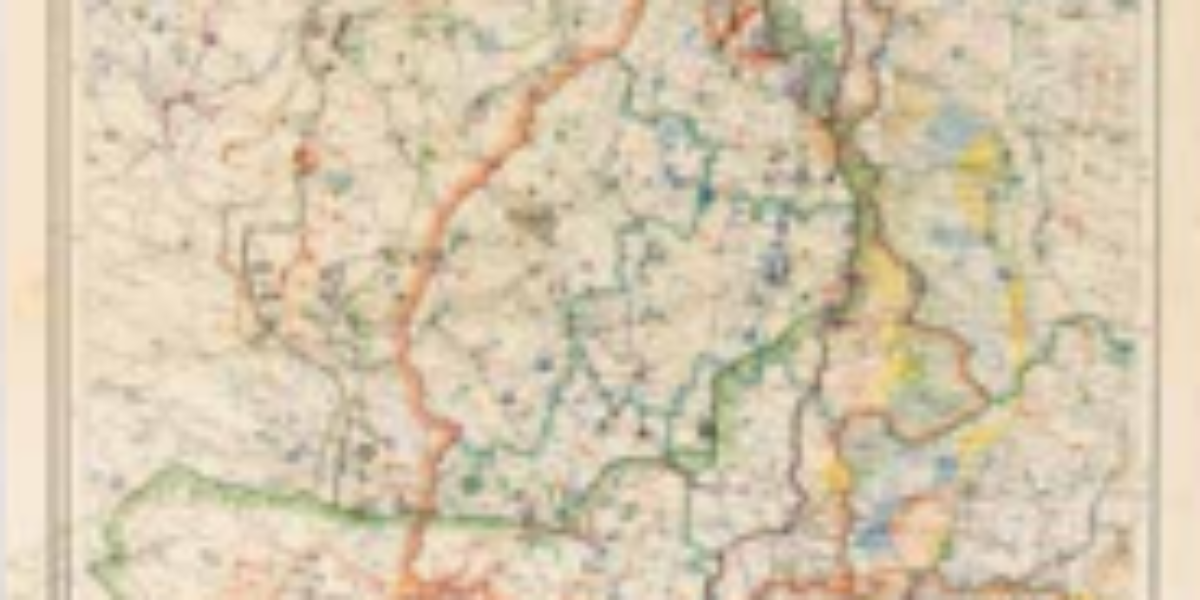
Newspaper map as informational propaganda As the tide of the war turns, the American home front receives increasingly enthusiastic maps. Charles Owens contributes maps on a weekly basis to American newspapers. His maps exhibit a style reminiscent of Hollywood movies and comic books. They feature a unique perspective with the earth depicted in a convex…
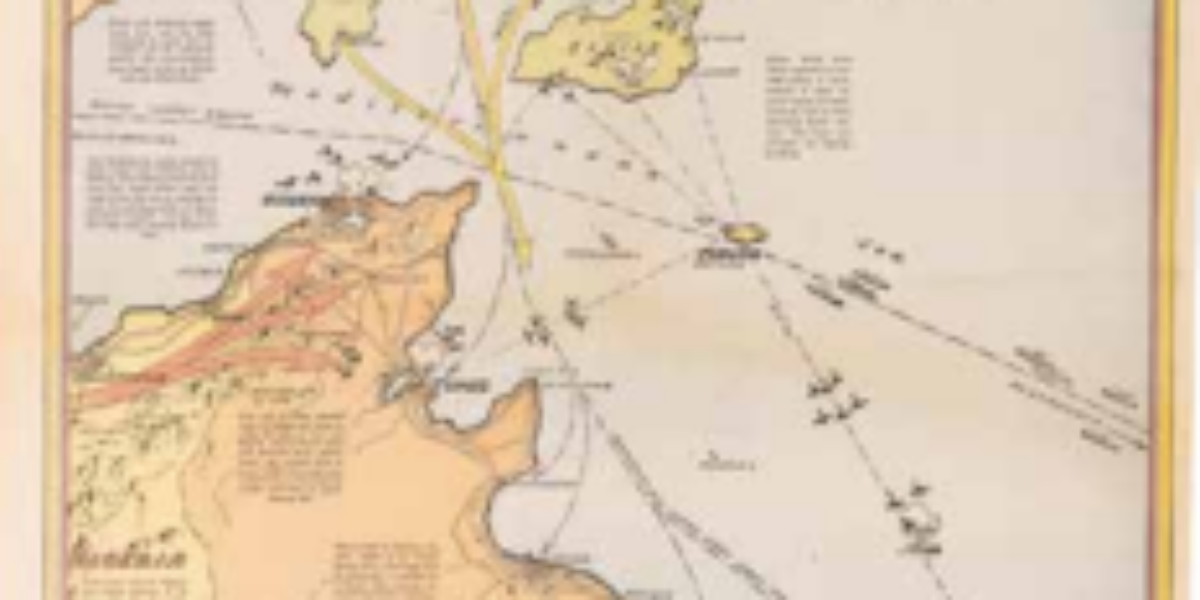
British terror bombing of Hamburg The British bombing of Hamburg during Operation Gomorrah in late July and early August 1943 created a massive firestorm that resulted in over 30,000 civilian deaths. The extensive material destruction is depicted in this accurate Nazi map. In Hamburg East in particular, an area spanning eight by four square kilometres,…
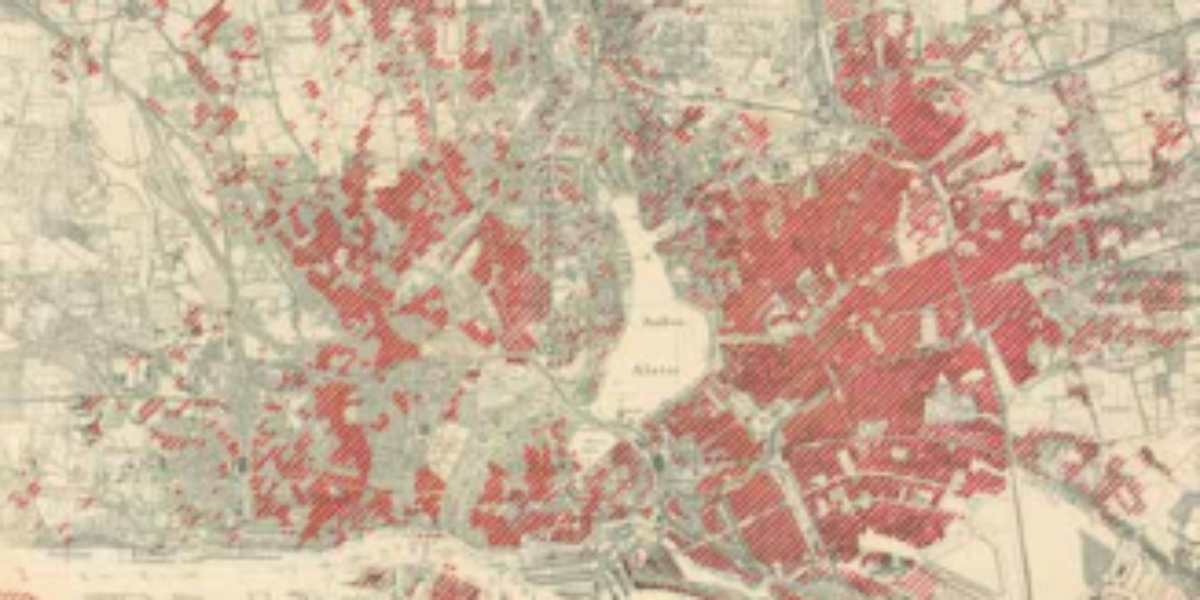
News of victories for own troops Every week, the U.S. military produces a poster-sized news map, featuring action arrows and explanatory notes. These maps are not intended for the general public but are distributed to military personnel worldwide, government officials, select libraries, and a single copy is provided to the U.S. House of Representatives. These…

The price of rapid advance: Huy devastated On August 18, allied forces launched an aerial bombardment targeting the Meuse River bridges in Belgium. The bombing mission involved “flying fortresses” dropping bombs on multiple locations, including Huy, which is situated south of Liège. Unfortunately, most of the bombs do not hit the intended targets (except for…
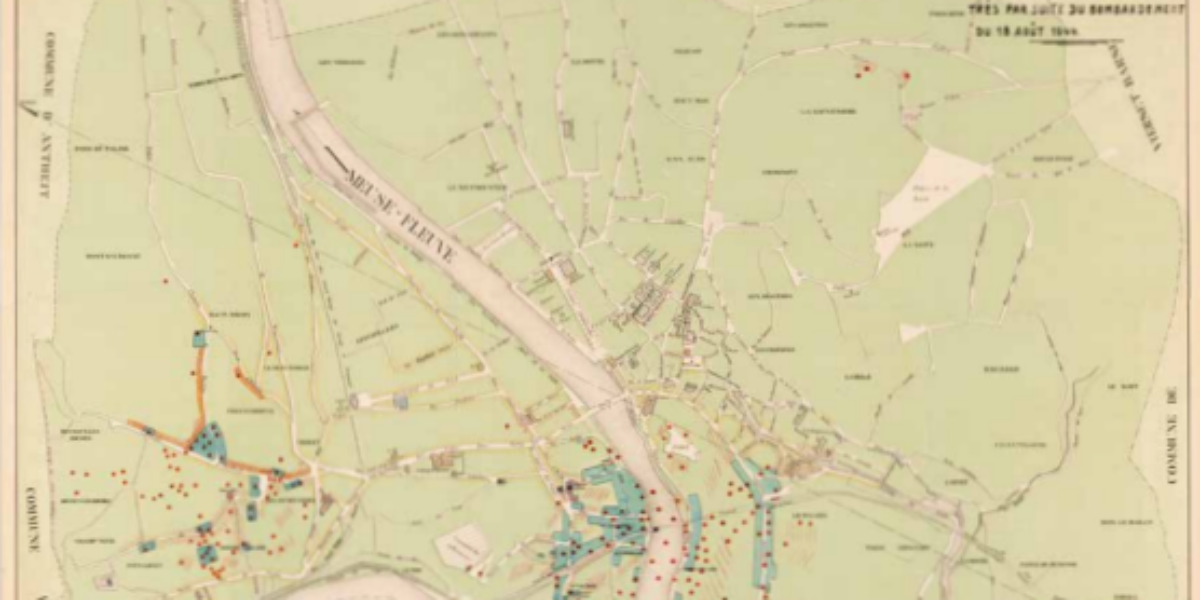
Canada liberates eastern and northern Netherlands In contrast to the style of the U.S. 79th Division’s memorial map, this Canadian map of their 3rd Division takes on a more formal and sombre appearance. Fags and dates indicate the shifting locations where the division headquarters was situated during its campaigns. The map highlights the strategic positioning…
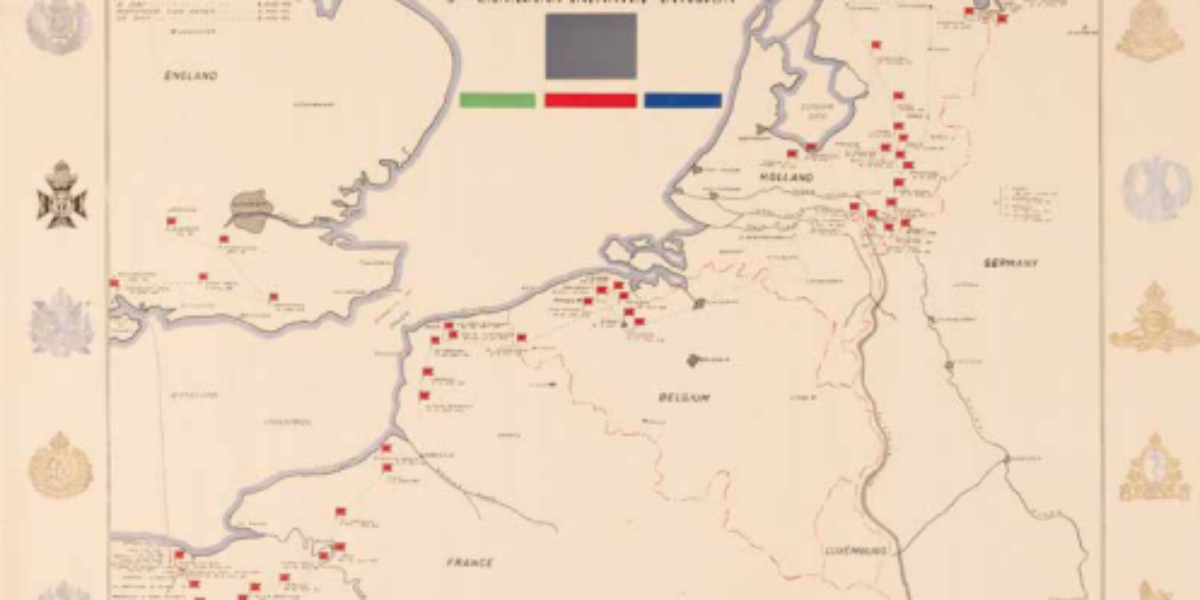
Endless internment in Bandung Shortly after the Allied capitulation in March 1942, Japan interned all Europeans in Indonesia. Men, women with small children, and teenage boys, were all placed in separate camps. Notably, the men’s camp, the boys’ camp, and the women’s camp were situated in close proximity to each other. The internment camps were…

Endless internment in Bandung Shortly after the Allied capitulation in March 1942, Japan interned all Europeans in Indonesia. Men, women with small children, and teenage boys, were all placed in separate camps. Notably, the men’s camp, the boys’ camp, and the women’s camp were situated in close proximity to each other. The internment camps were…
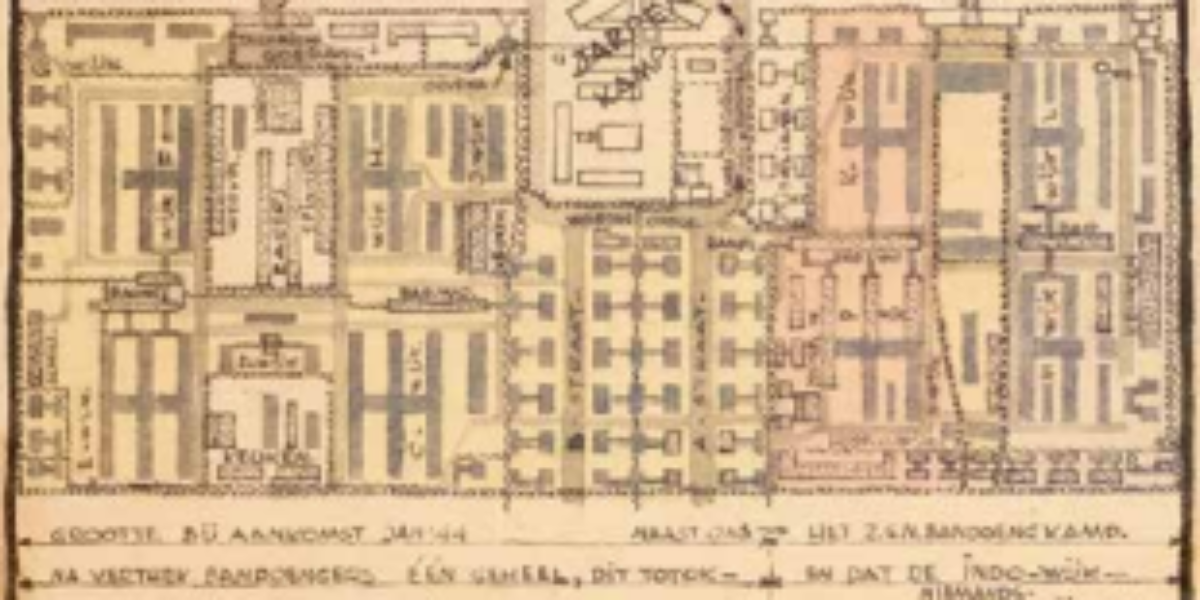
Escape maps for pilots These “escape maps” printed on artificial silk were initially kept as a secret. They served a crucial purpose for American pilots who might be shot down over the sea or enemy territory. If a pilot managed to save himself by parachuting to safety, these maps provided a valuable means of orientation….

Distribution of human races Dr. Heinrich Berghaus played a pivotal role in advancing modern thematic cartography with his Physikalischer Atlas. The anthropographic atlas section includes a map that differentiates six distinct races. A wreath of representative heads showcases various skin colors, facial features, and skull shapes associated with these six racial groups. Unfortunately, racism also…

Mission postcard Mission cards, which reached their apex in the mid-19th century, play an important role in garnering financial support for the global dissemination of Christianity. During this period, missionary efforts were primarily focused on the colonies. However, it should be noted that some Christian missions also advocated for the liberation of Black individuals from…
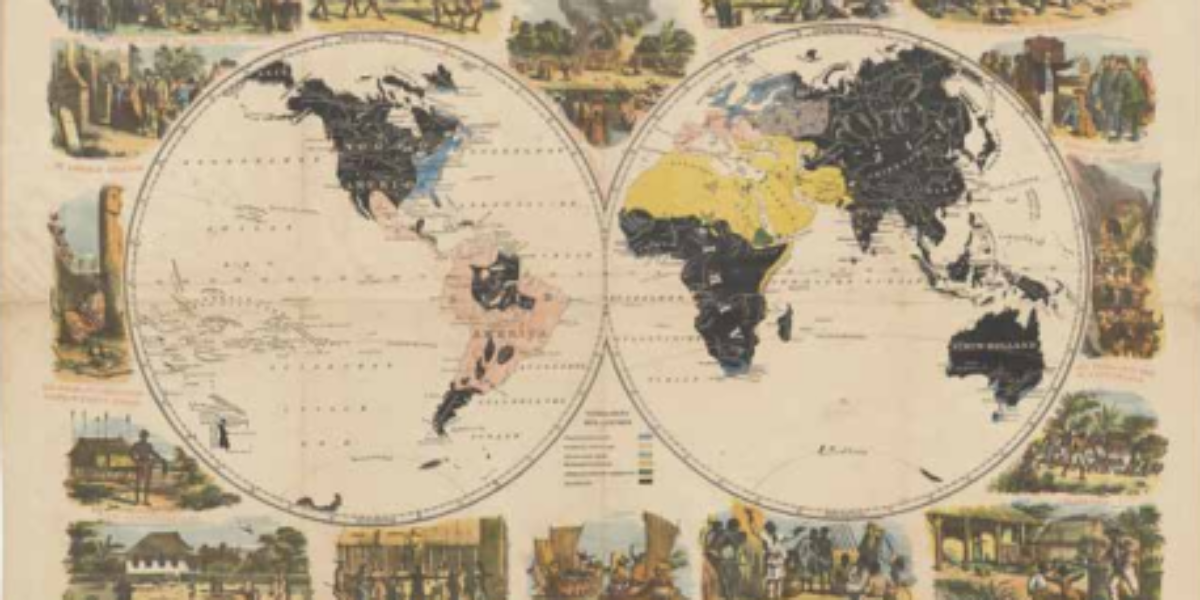
Map of the Dutch Gold Coast Following the capture of the Guinean fort St. George Del Mina in 1637, the fort expanded to become the Dutch Gold Coast. Equipped with factories, this fortress became the focal point for the West India Company (WIC) and their slave trading via Curaçao. In 1871, the Netherlands sells this…
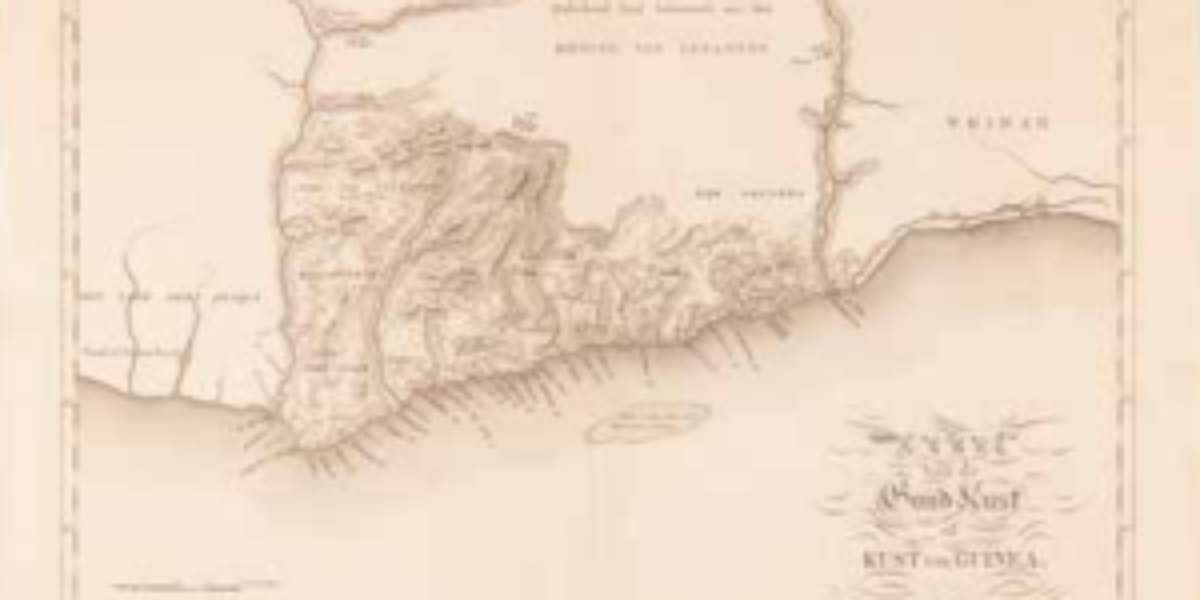
Return of enslaved people to West Africa This map of West Africa depicts in colours the routes of four expeditions conducted between 1794 and 1822, which aimed to explore the interior of Sierra Leone and a portion of Guinea. Two of the explorers were responsible for creating this map. Importantly, after the abolition of slavery,…
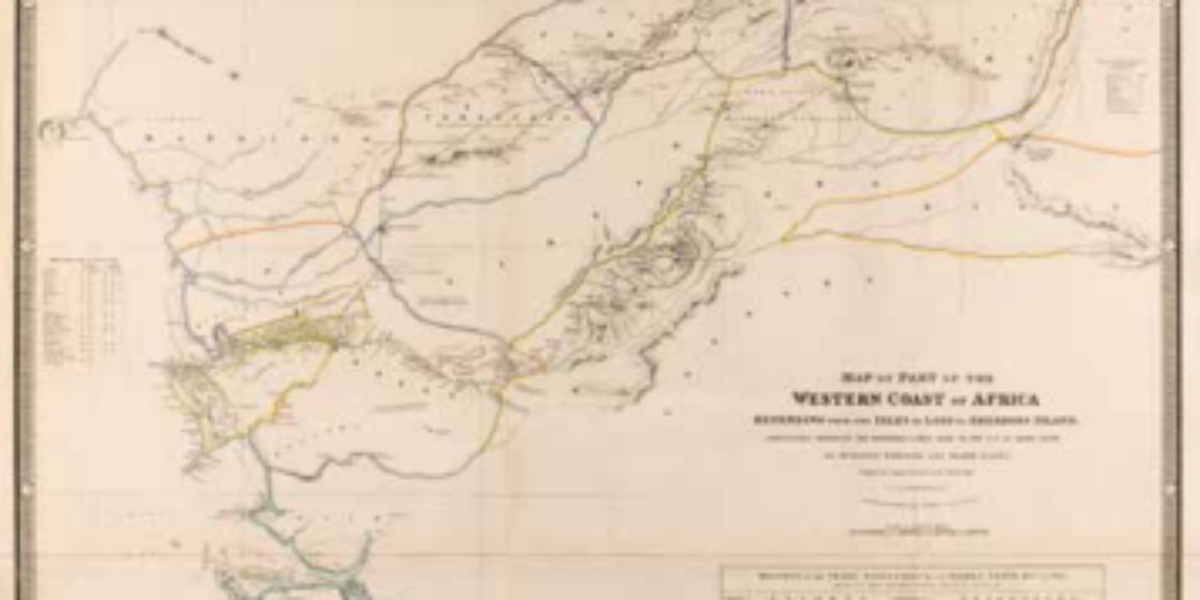
Slavery in the Sokotokaliphate Heinrich Barth, a German Arabist, provides an account of his ‘voyage of discovery’ through Central and West Africa, which is traced by the red lines on the map. Barth’s argument revolves around the idea that the ethnic identity of the peoples he encounters is determined by their history. During his expedition,…
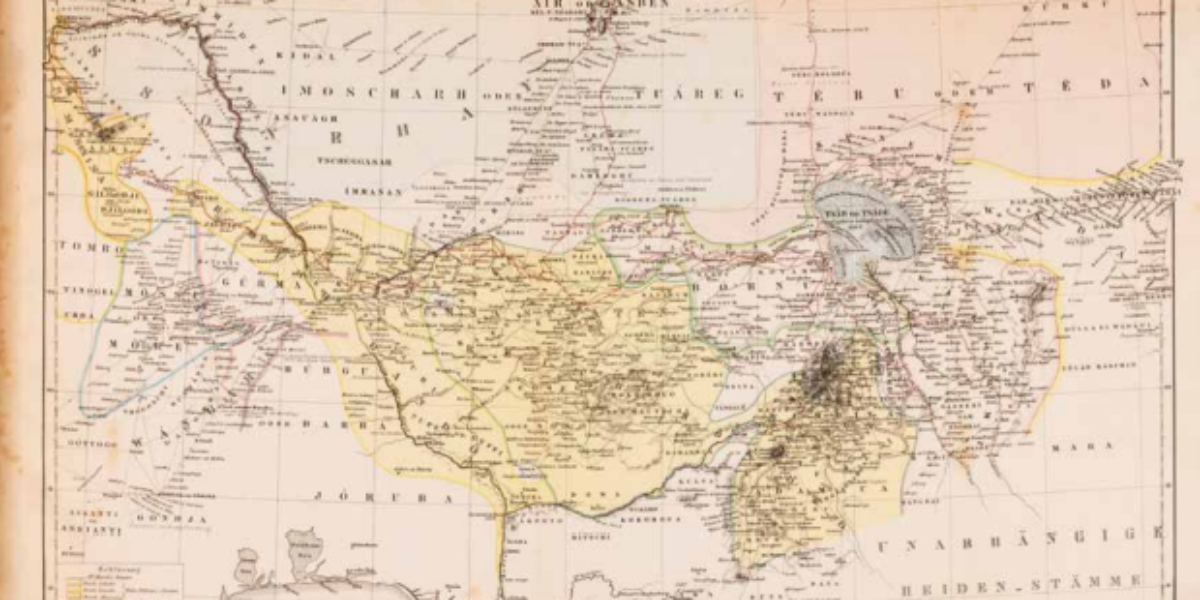
Slave trade and colonisation Harry Johnston, an explorer and colonial administrator, was fluent in several African languages and wielded significant influence over British colonial policy. In the ‘British Central African Protectorate,’ he led battles against Muslim Swahili and Yao slave traders. His first map delineates the slave traders’ ‘hunting grounds,’ distinguishing them through light and…
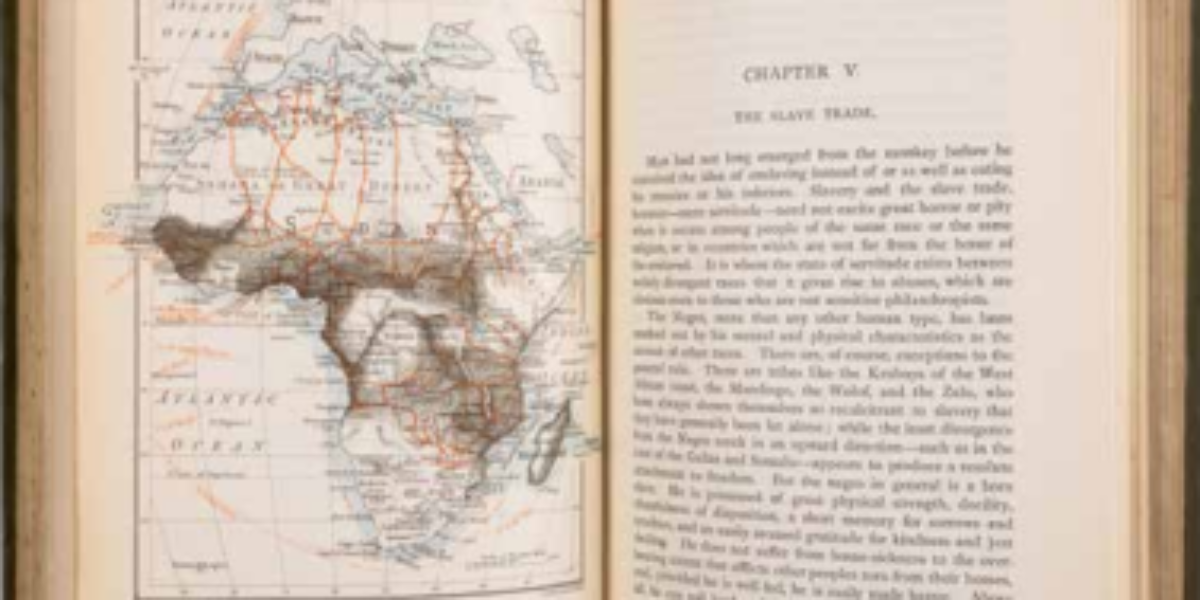
Map of British Java Following the French annexation of the Kingdom of Holland, Stamford Raffles leads a British military expedition against Java in 1811 and becomes lieutenant governor of the East Indies. During his tenure, cartographer J. Walker conducted land measurements and assigned geographical names, which form the basis for this fine topographical map of…
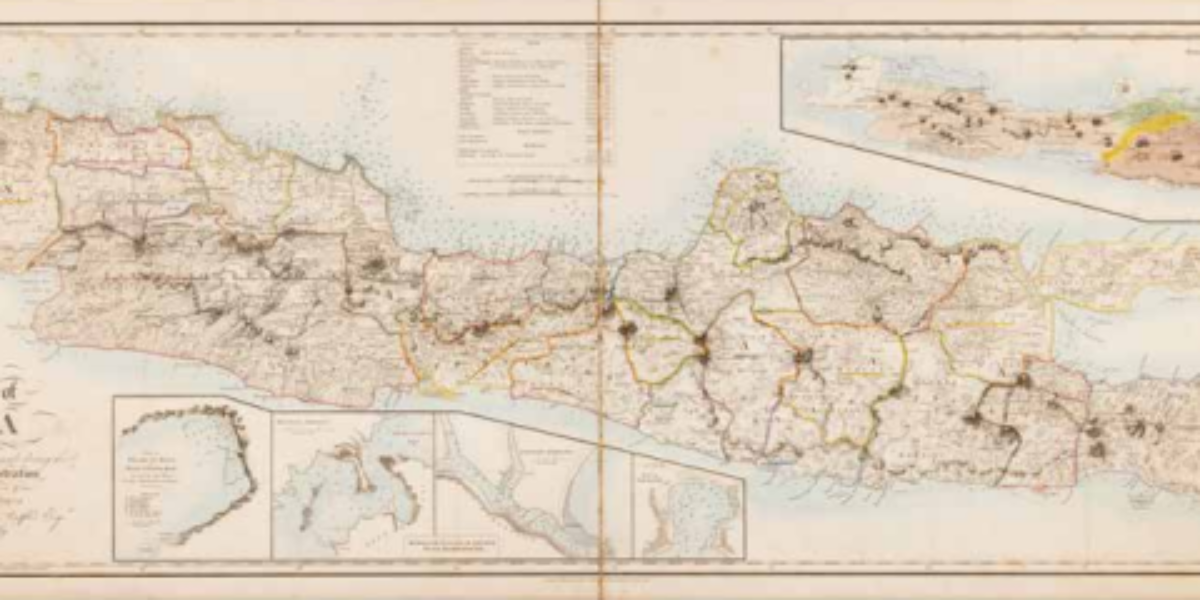
Netherlands’ bloodiest colonial war Cartographer Thomson became an infantry first lieutenant in the Royal Dutch East Indies Army (KNIL) in 1894. At that time, the Dutch had been embroiled in their bloodiest colonial conflict in the Sultanate of Aceh for decades. During his tenure as a member of parliament in 1906, Thomson criticised what he…
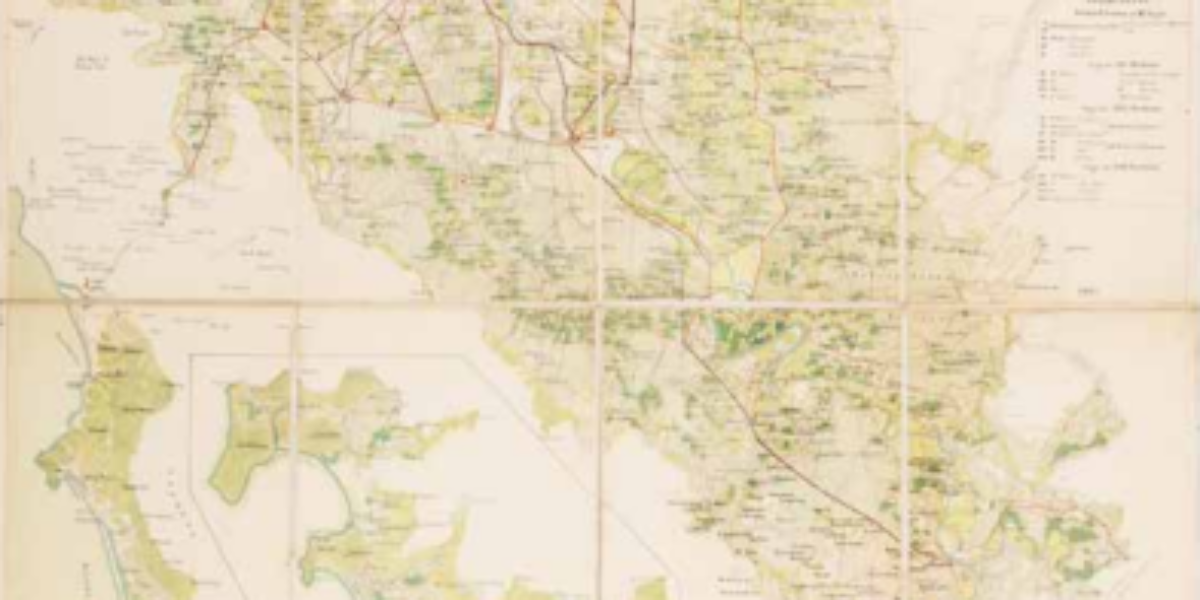
Kulie plantations on Sumatra’s east coast After 1970, Western entrepreneurs managed to secure extensive agricultural concessions on Sumatra’s east coast after 1870, especially for tobacco and rubber plantations (indicated in orange and green). Over time, these plantations account for 20% of the Dutch East Indies’ exports. High dividends for Dutch shareholders in these coolie plantations…
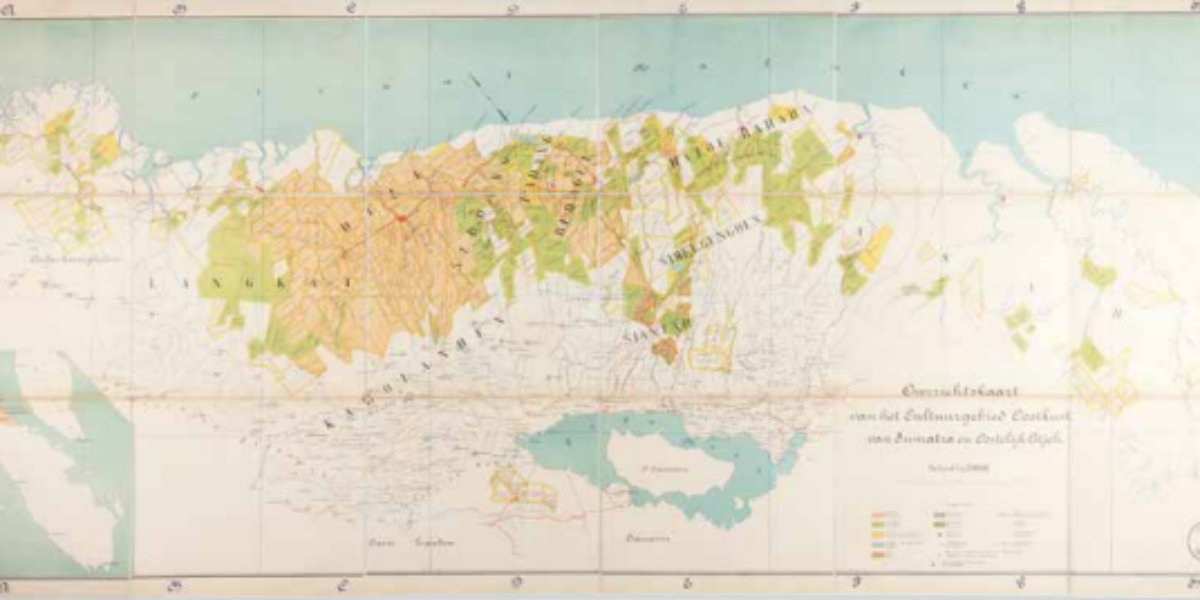
Prelude to ‘Police Action‘ Following Japan’s surrender, Sukarno proclaimed the Republik Indonesia on 17 August 1945. The Netherlands does not recognise the Republik and at most wants to introduce a federal form of state under the Crown. This March 1947 map is published during the prelude to the first ‘police action’ that culminates in numerous…
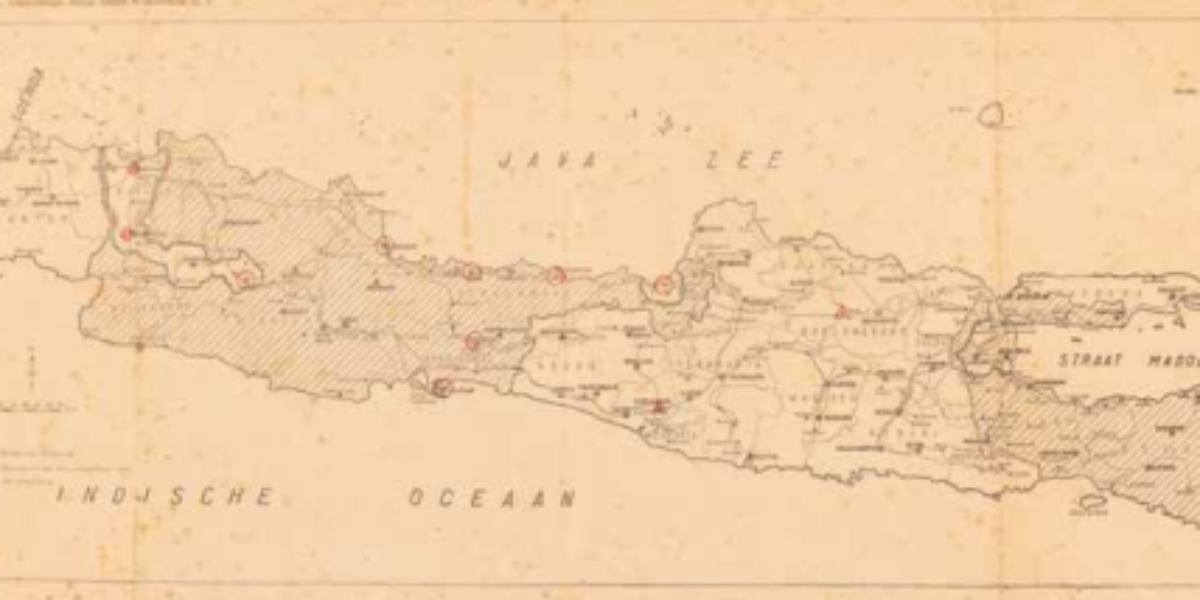
NSB pamphlet Suriname and Curaçao As represented in this pamphlet, the National Socialist Movement (NSB) takes issue with Britain and America foreign policies. It was prompted by the Dutch government-in-exile’s permission in November 1941 to station American troops in Suriname to protect the bauxite mines (a raw material essential for the production of aluminium). At…
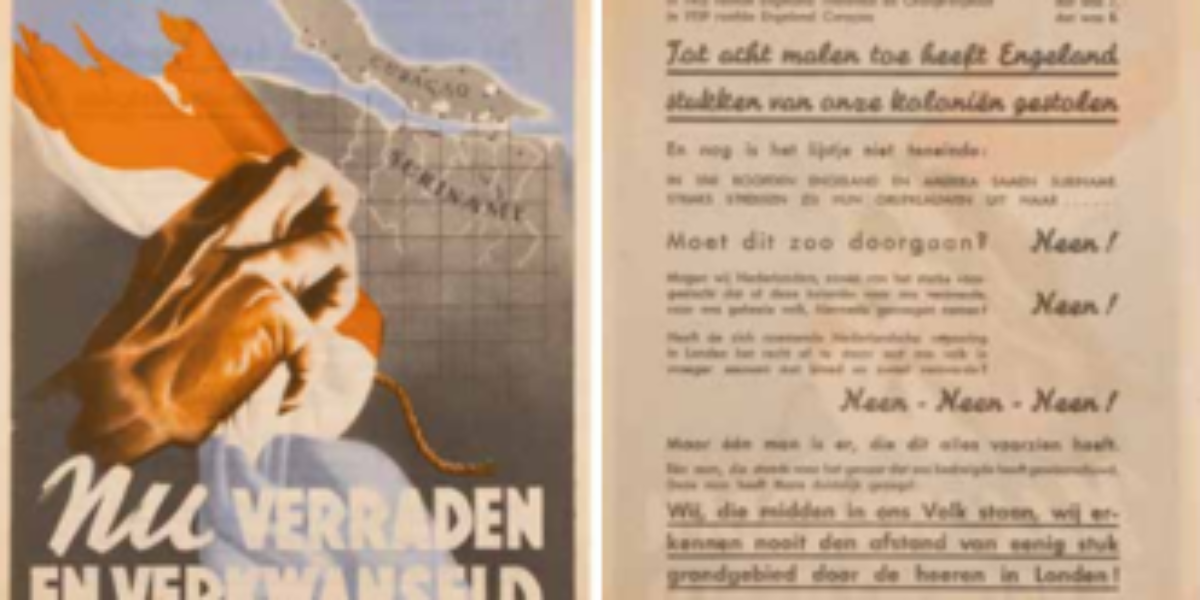
Ethnographic map Austrian monarchy Karl von Czoernig, the chief statistical officer of Austria, used this map to envision a restored Habsburg order after the national uprisings of 1848. The multiplicity of nationalities here does not yet rule out political unity, nor do the 14 language branches here cross imperial borders.
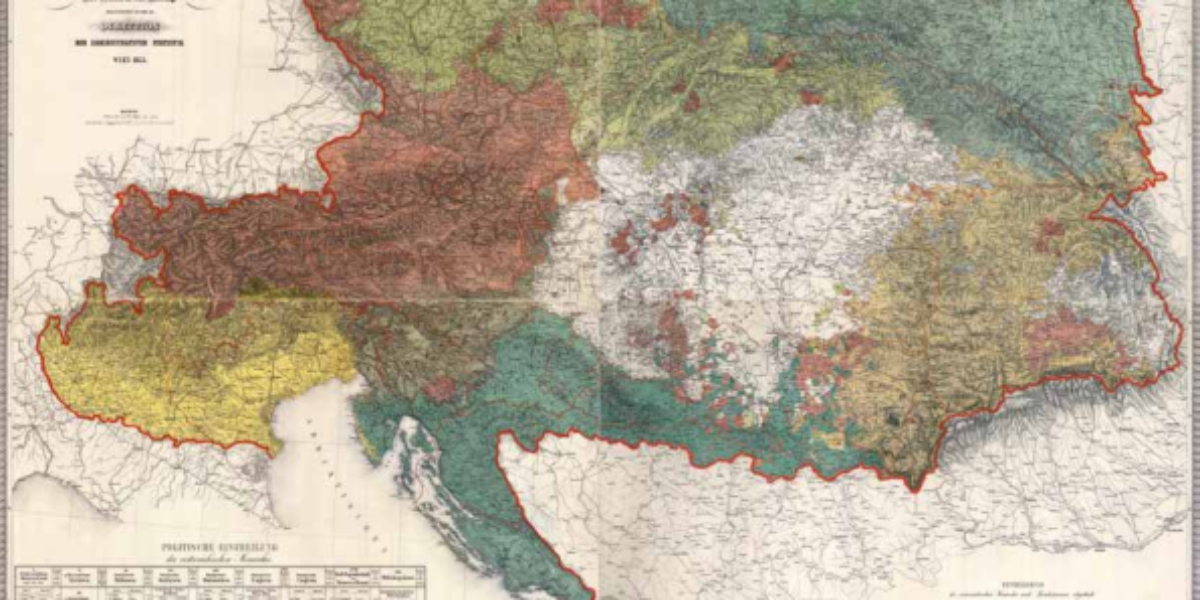
Capital of ‘Kakania‘ Since 1867, Vienna has served as the capital of ‘Kakania,’ an ironic term referring to the ‘kaiserlich-königlichen Doppelmonarchie Österreich-Ungarn.’ The map illustrates the old city centre (I) and the desolate slums located beyond it (e.g., II and VII). Due to the rapidly increasing population, new neighbourhoods (XXI and X) are being constructed…
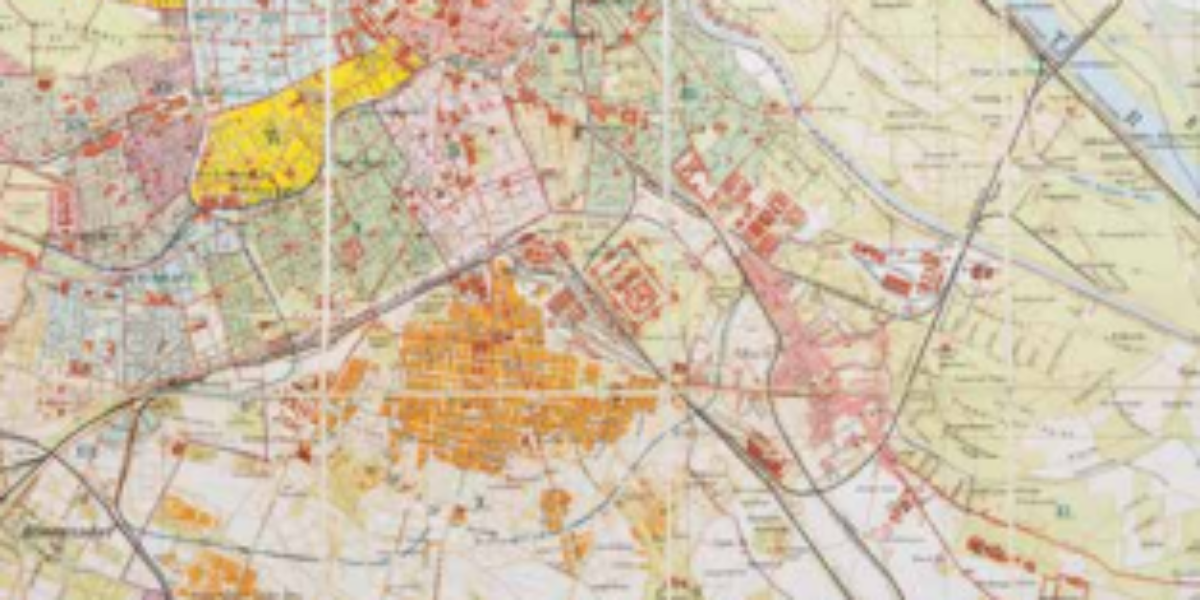
Map of the Greater Ottoman Empire This map of the Ottoman Empire depicts a vast empire spanning three continents, but there are some notable issues with its red outer borders: Bosnia-Herzegovina is still depicted as part of the Ottoman Empire, despite being occupied since 1878 and annexed by Austria-Hungary in 1908. Bulgaria is shown as…

The British Empire under George V During the 19th century, the rose-red British Empire was characterised by its pursuit of raw materials for industry and the creation of markets for its manufactured goods. Congruently, it also required the establishment of strategic naval bases and supply stations around the world. This map reflects the belief in…
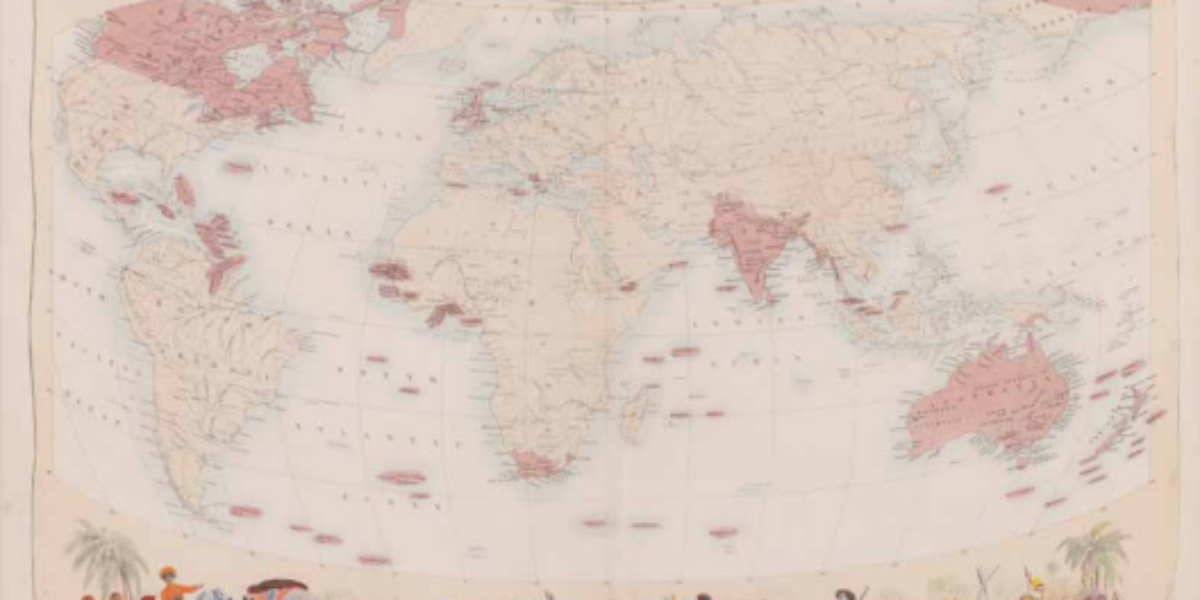
Railways in the British East Indies British India (1858-1947) comprises the present-day countries of India, Pakistan, Bangladesh, Sri Lanka and Myanmar, and is considered the ‘crown jewel’ of the British empire. The Indian railway system plays a pivotal role in the development of infrastructure, including the construction of dams, aqueducts, bridges, and the transport of…

European Russia and Siberia This hand-painted ‘map of European Russia and Siberia’ with inset map ‘Asian Russia’ depicts the administrative division of the tsarist empire into various governorates and their respective provinces. This modern map provides detailed information on areas, population figures, and distances. The Russian Empire was characterised by its multilingual and multi-religious composition;…
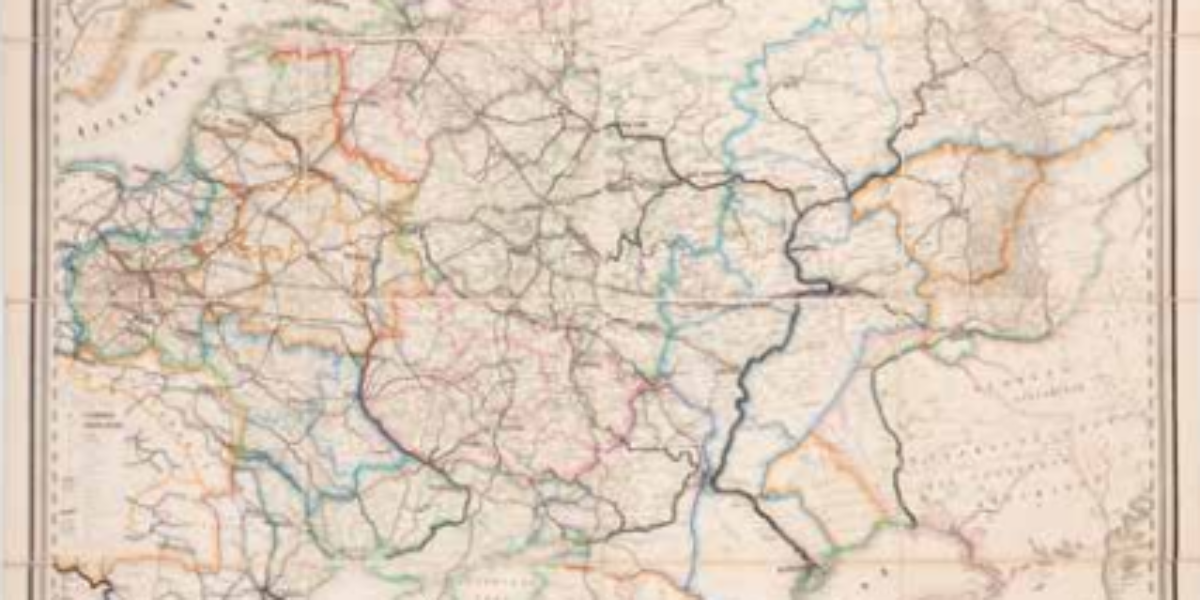
Four million starvation deaths in Ukraine On the largest map, innumerable blue markers indicate the memorials and monuments erected to commemorate the victims of Holodomor, the devastating genocide by starvation that occurred in 1932-’33. Over five million people perished, four million in Ukraine alone. The yellow crosses refer to the few pre-1990 memorial plaques.
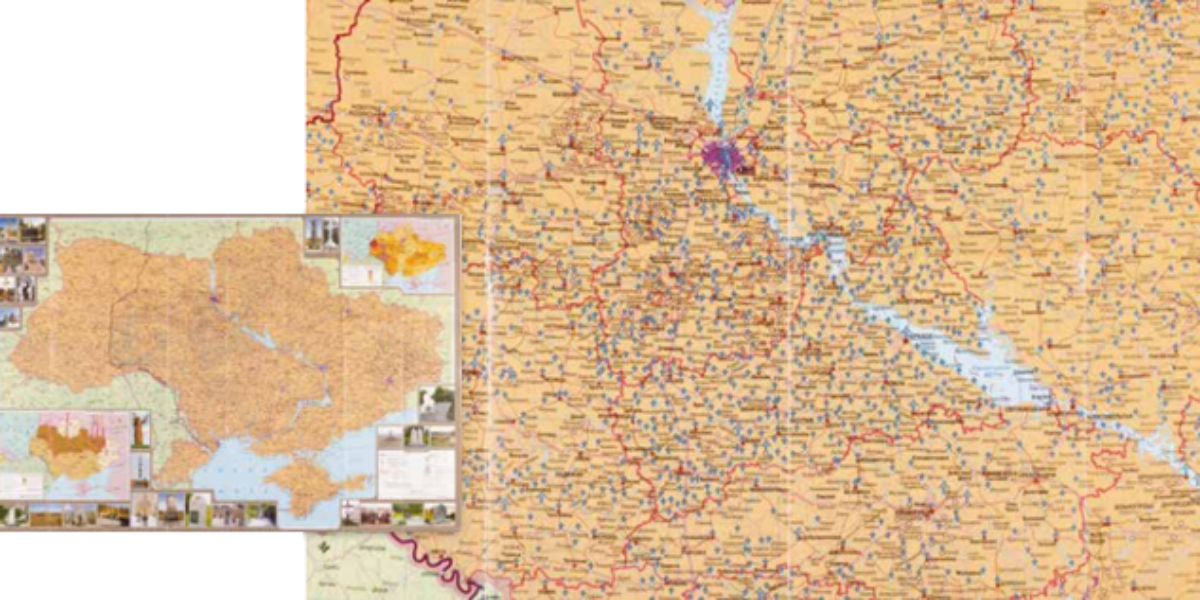
Soviet Union tablecloth This plasticised map of the Union of Soviet Socialist Republics (USSR), with its division into formal republics and constituent republics, portrays the vast Russian empire in a dominant red colour. At the time of the USSR’s establishment, each republic was granted the right of secession (which would later be exercised by all…
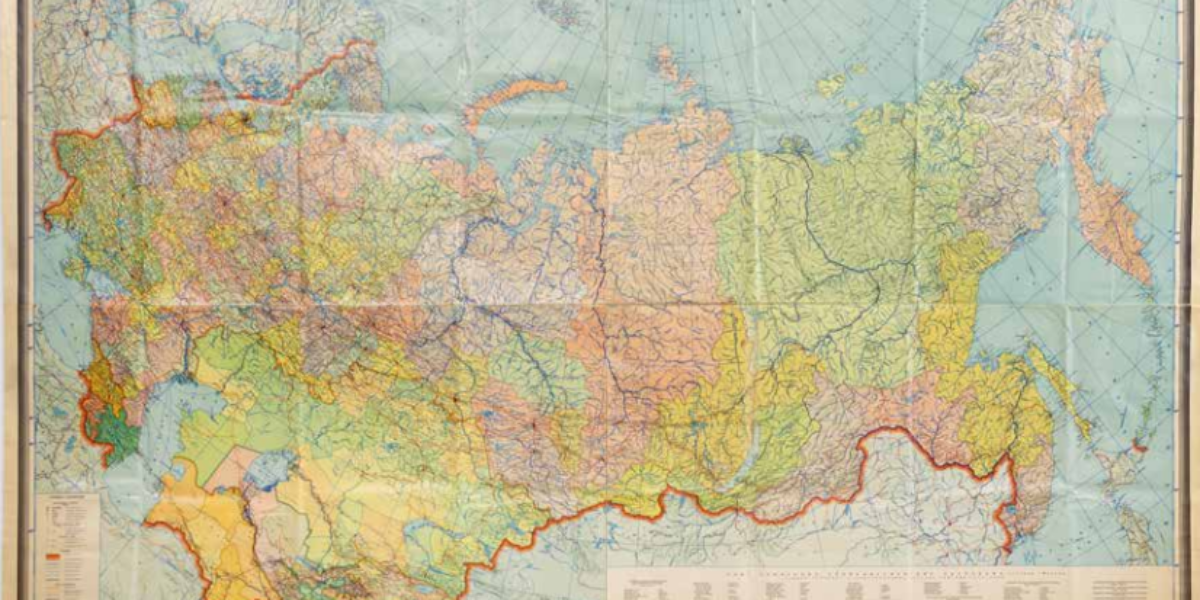
‘Kill the Indian, save the man‘ This map illustrates the remaining tribal areas of Native Americans following a devastating history of epidemics, conflicts, and ethnic cleansing during the era of westward expansion in the United States. Aside from the remaining reservations, the map also highlights the 22 boarding schools for Native American children, denoted by…
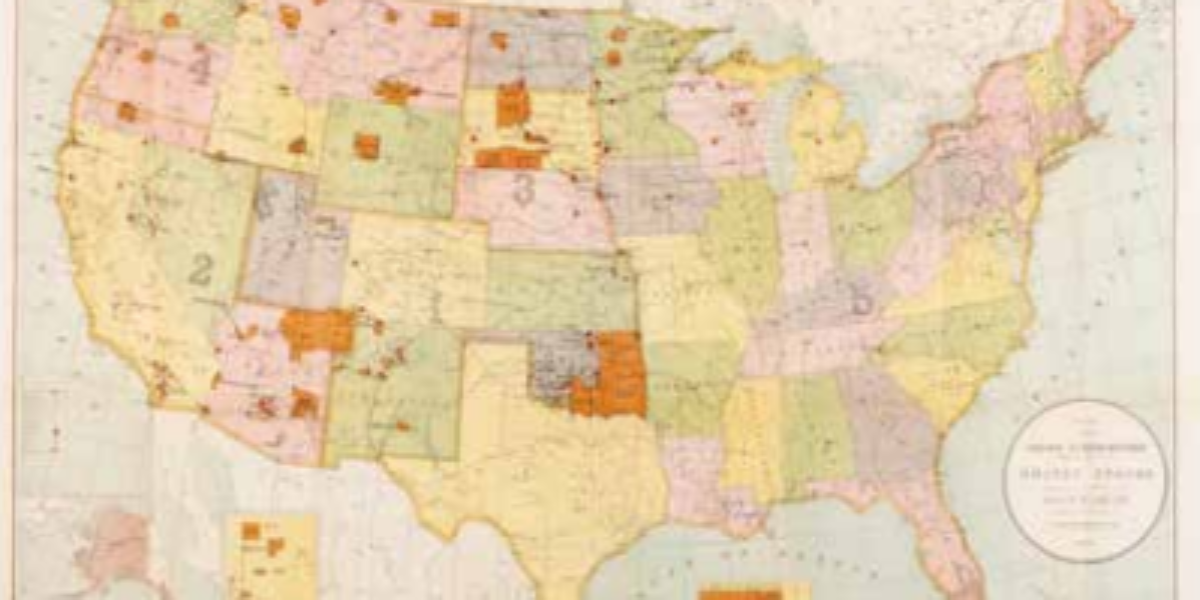
Controversial Peters projection On the traditional Mercator-projected world map, Europe appears much larger than South America, even though in reality it covers only a third of its area. Additionally, the map by the 16th-century geographer Mercator gives more emphasis to the northern hemisphere. East German cartographer Peters challenged this Eurocentric view by introducing a new…
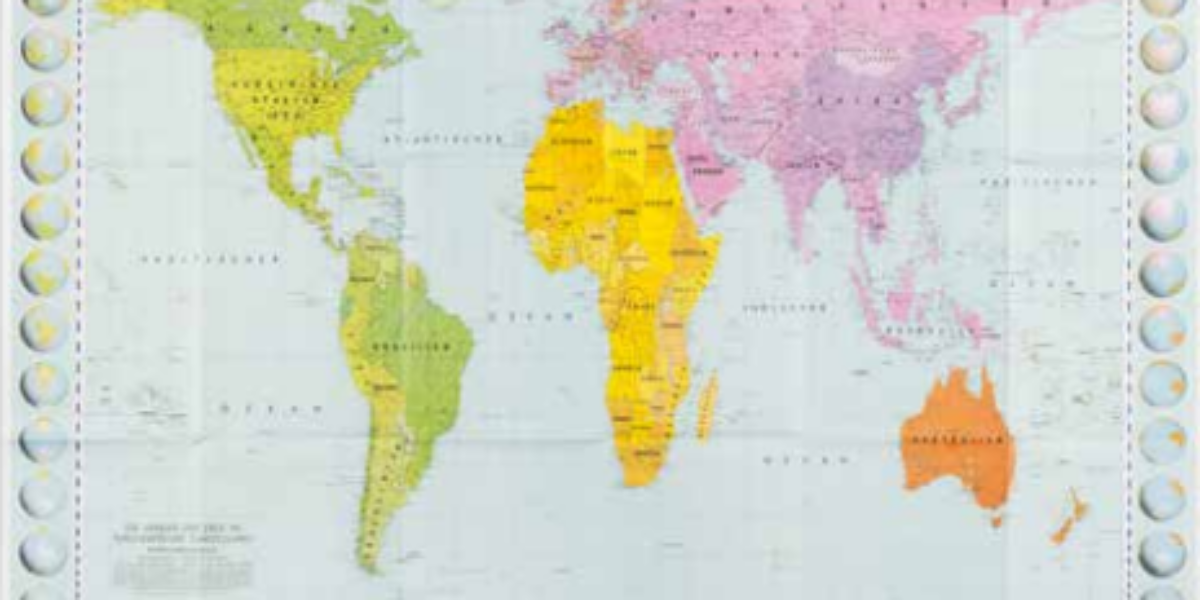
Oppression and resistance in South Africa This map is part of the Komitee Southern Africa’s (KZA) educational folder titled ‘This is Apartheid.’ Apartheid was a system that enforced racial segregation, separating people into categories such as Bantus, Coloureds, Asians, and Whites. Black people residing in ‘white areas’ – even if their families had lived there…
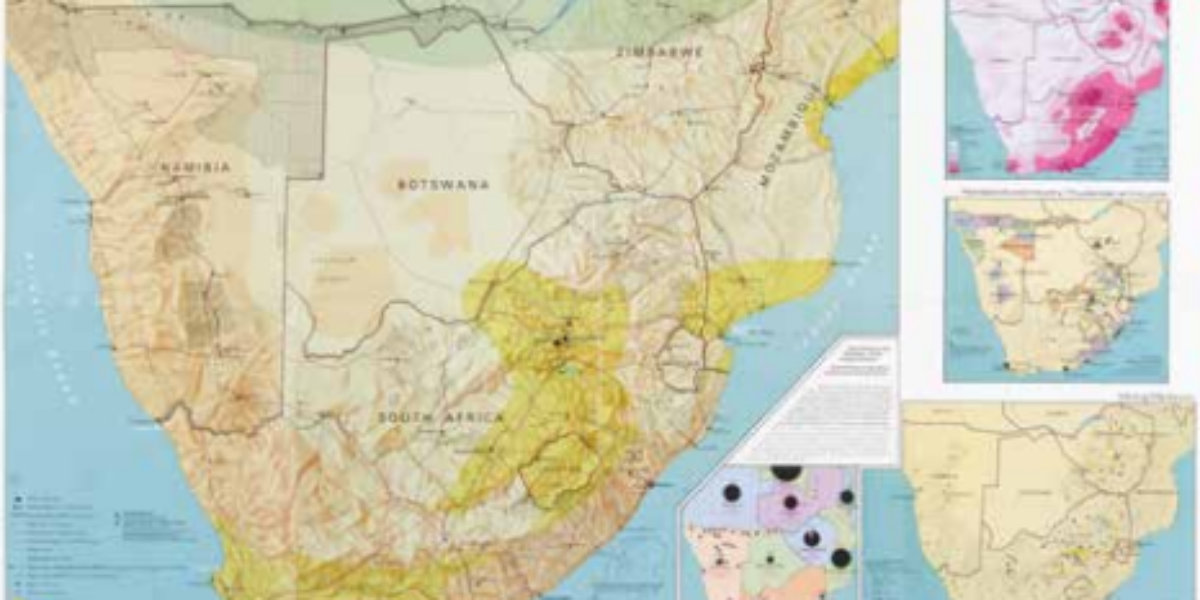
Germany divided and occupied The capitulation of Greater Germany brought about Allied occupation, extending its influence to Austria as well. In the aftermath of WW2, both countries, along with their respective capitals, are divided into zones of control under Soviet, American, British, and French rule. Germany ceases to govern itself to the extent that even…
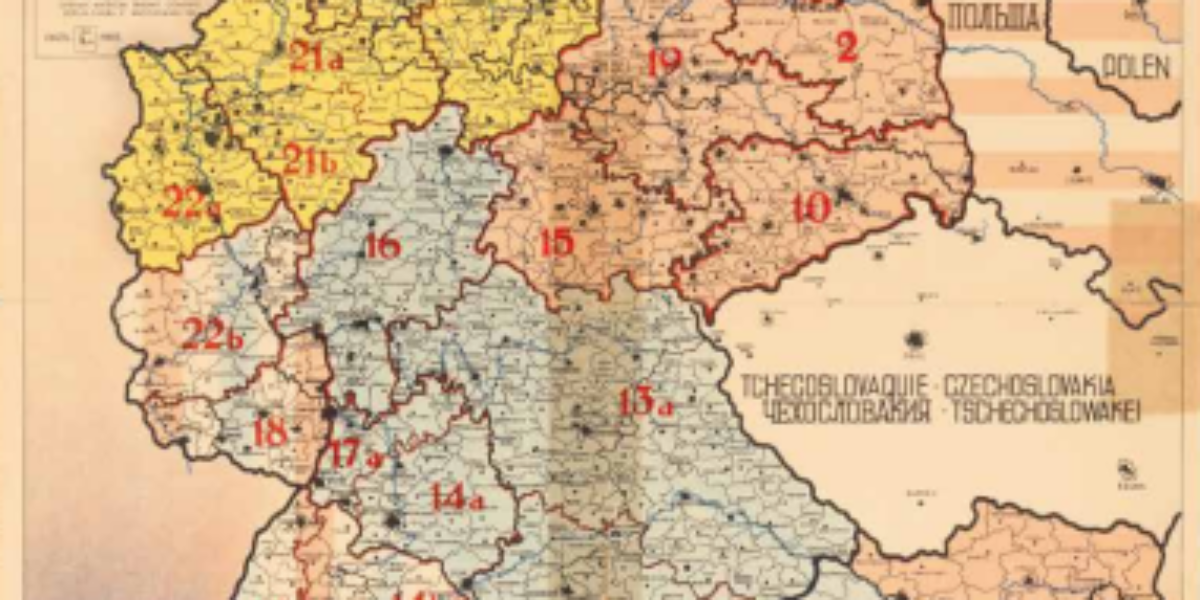
Marshall Plan as the start of Cold War Between 1948 and 1952, the United States allocated $13 billion (equivalent to over €150 billion today) to provide Europe with food supplies, industrial aid, and infrastructure development. This massive investment played a pivotal role in revitalising the European economy, effectively pulling it out of a state of…
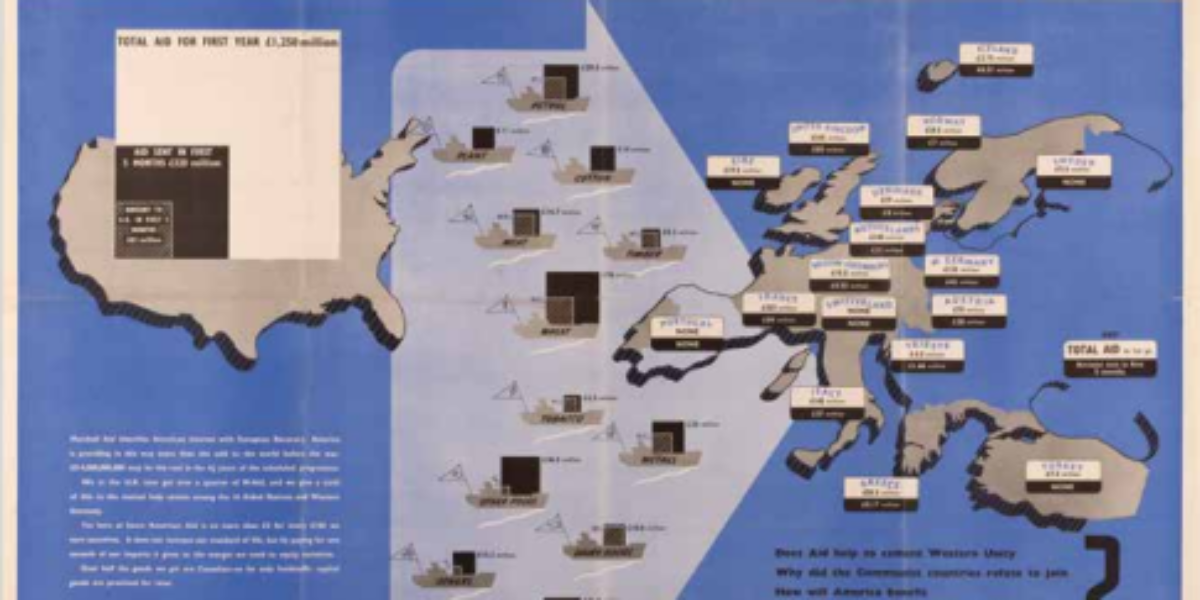
The World divided into red and blue The world is portrayed in shades of red and blue, with red symbolising the Soviet Union, and by extension, the colour of revolution. US propaganda enthusiastically adopts this colour scheme on this map, as it enhances the perceived threat and sheer magnitude of the continental Soviet empire. In…
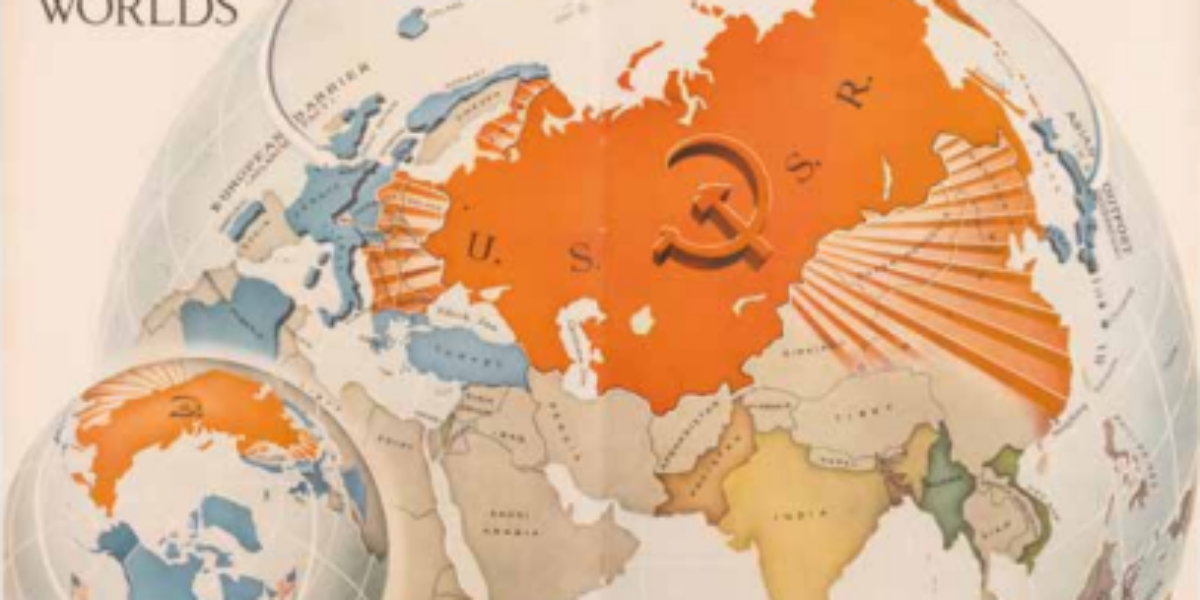
The Gulag, an archipelago of penal camps The term GULAG is the official abbreviation for the network of education and labour camps established in the Soviet Union from 1930. Under Stalin, this era of terror witnessed the condemnation of millions of Soviet citizens to long periods of confinement within these camps. Over time, defeated army…

Satire as a weapon of propaganda While US radio broadcasts messages about world peace , defence, and disarmament (where ‘Мир/Mir’ signifies both ‘world’ and ‘peace’), the United States military is actively establishing military bases across Europe. The contrast between eloquent words and concrete actions did not go unnoticed by the Soviet Union in 1952, just…
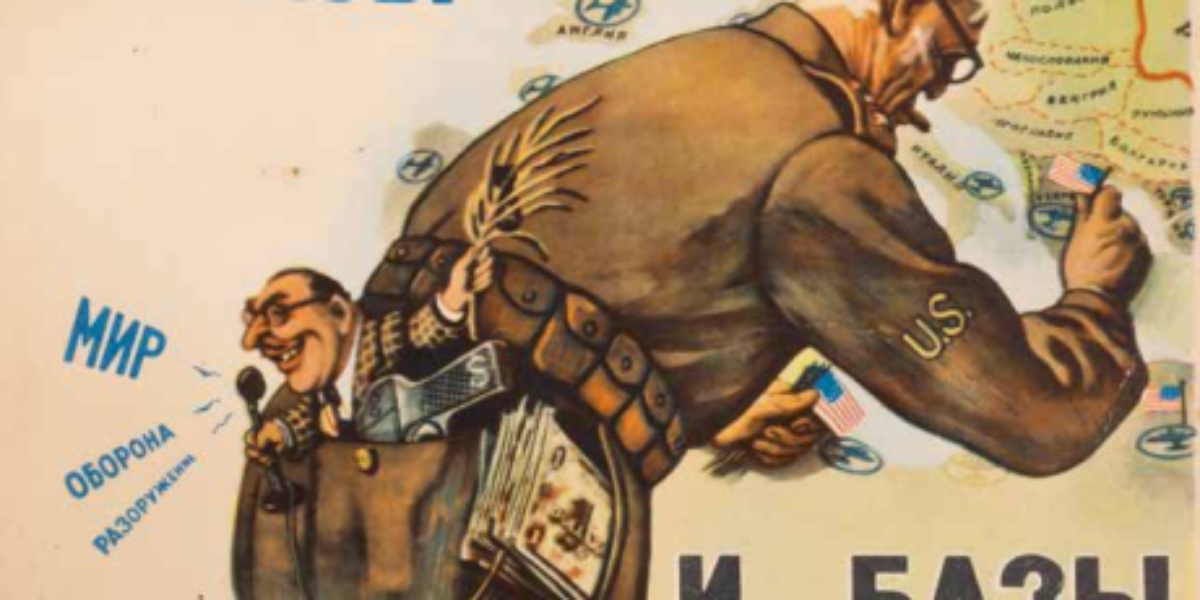
Sheltering against nuclear attack From 1949, the deteriorating relations between the Western and Eastern blocs raised the spectre of a potentially nuclear world war. Amid these heightened tensions, plans to construct air raid shelters, such as the one depicted here in ‘s Hertogenbosch, were only sporadically realised, although its worth noting that the six air…
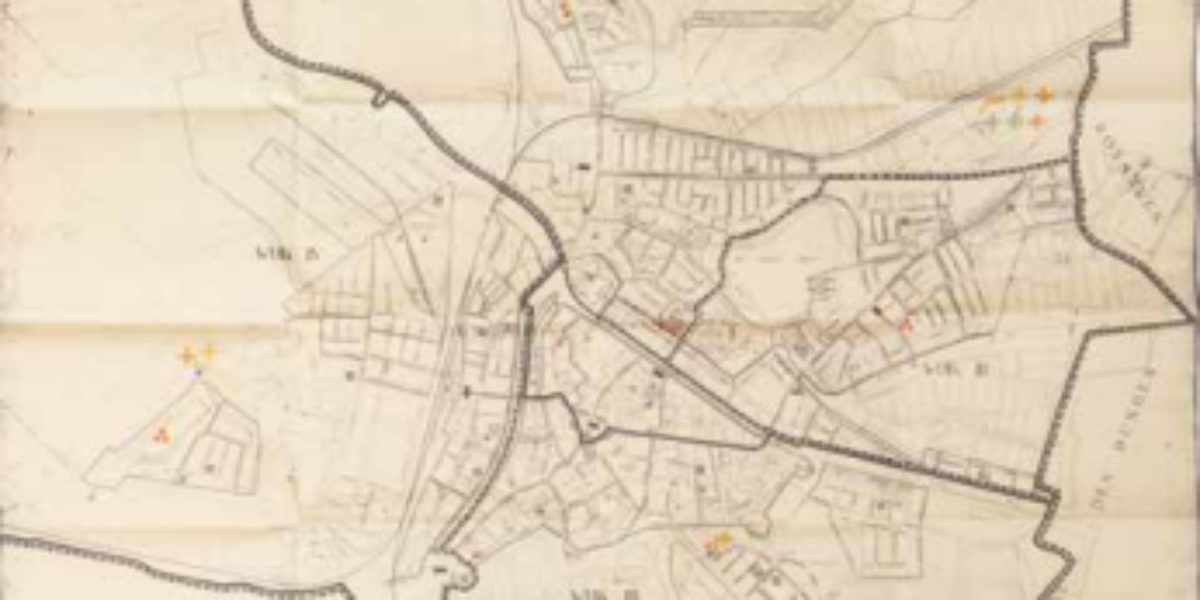
Beginnings of European integration The formation of the European Coal and Steel Community (ECSC) in 1952 was driven by a combination of political, economic, and military motives. One of the primary goals was to extricate West Germany from its post-war turmoil in order to prevent a recurrence of the retaliation witnessed after the Treaty of…
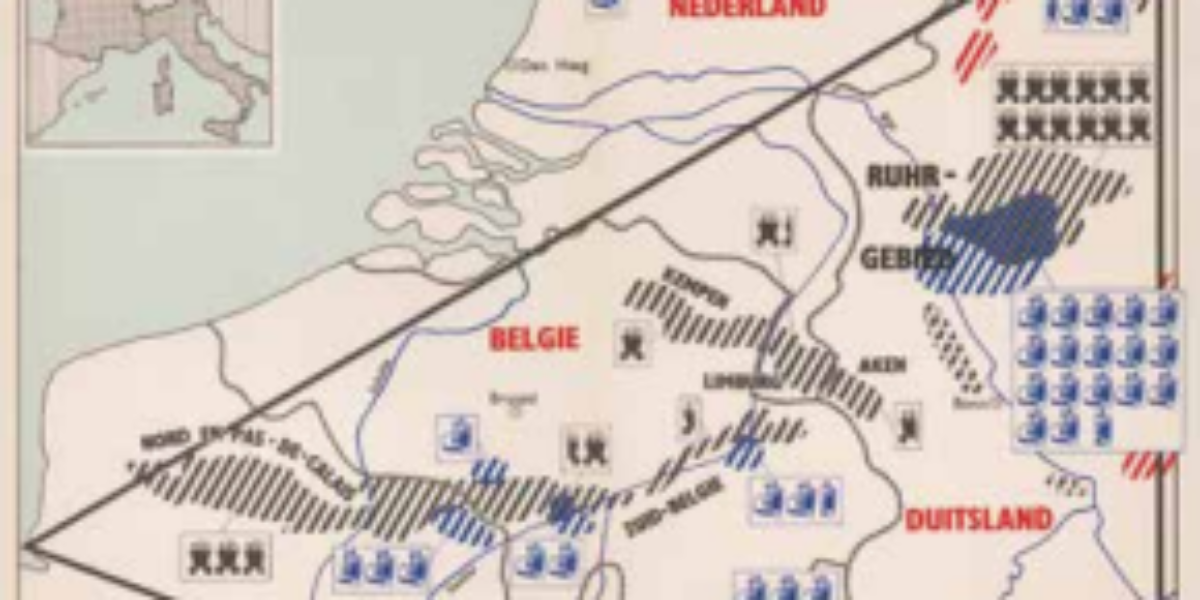
Beginnings of European bureaucracy In 1955, a political and economic alignment developed between the Europarat and the ECSC (Montanunion). Both entities boast supranational decision-making bodies, and the exercise of these powers falls under the control of parliament and the Court of Justice. Notably, the principle of the free movement of individuals had already been established…
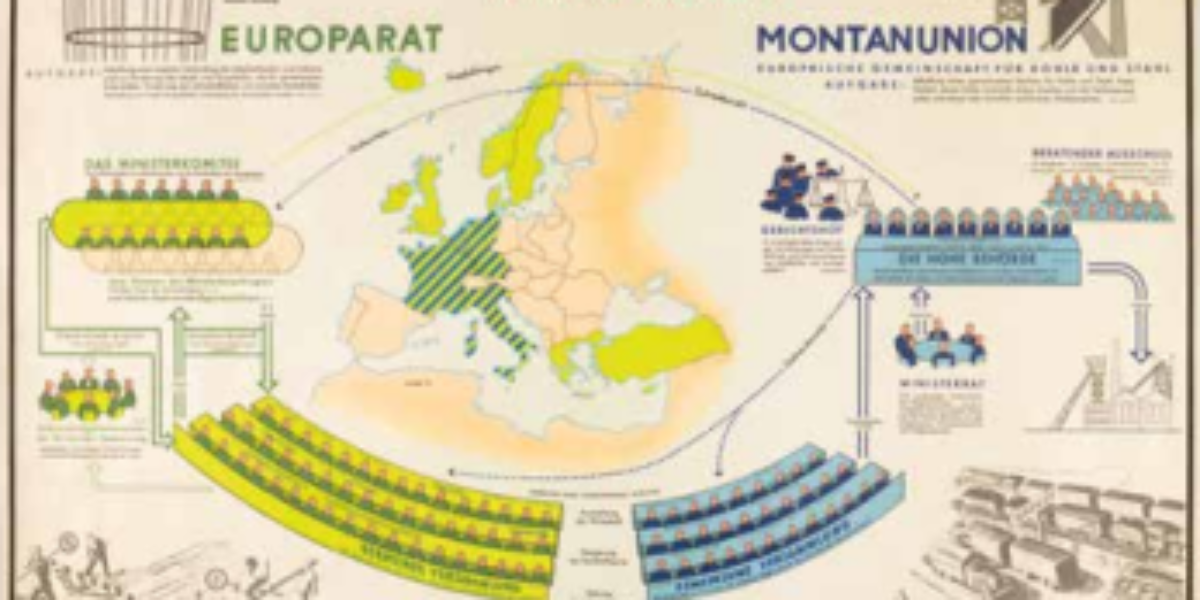
Berlin wall as Cold War symbol The Berlin Wall serves as a powerful symbol of the Cold War, occupying a prominent position on this schematic map of Berlin. This physical barrier marked the ‘final’ division between the western and eastern sectors of the city for its residents. In August 1961, this ‘wall of shame,’ (as…
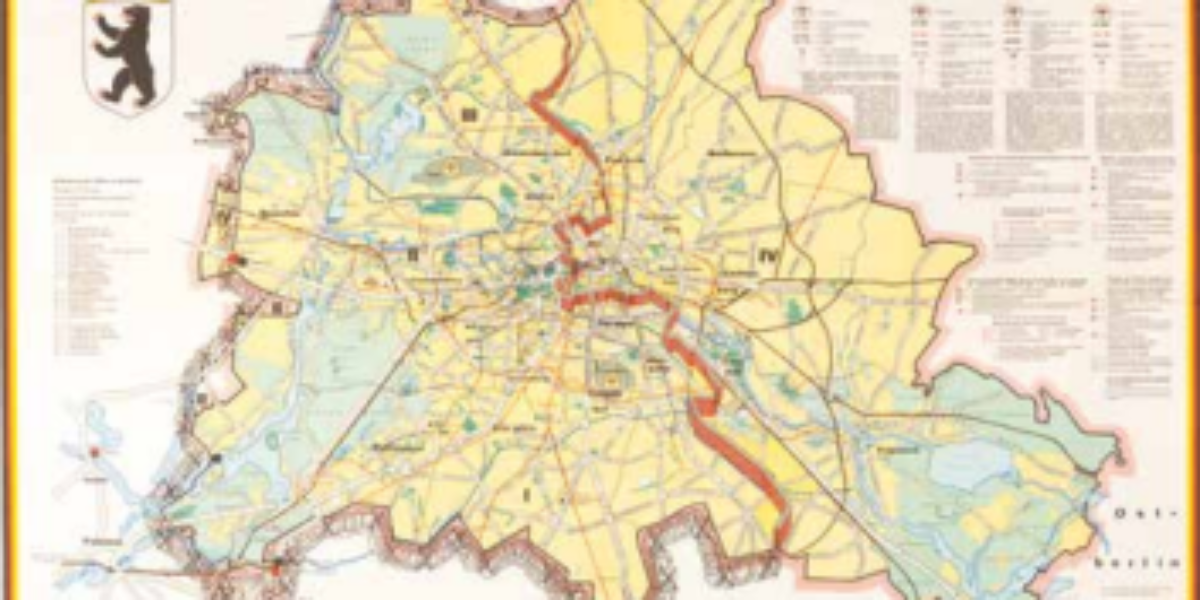
Europe divided by the Iron Curtain The primary division within Europe is delineated by the Iron Curtain, distinguishing the ‘capitalist’ West from the ‘communist’ East, symbolised by the colours blue and red on this map. This map starts with military cooperation, then political and finally economic.
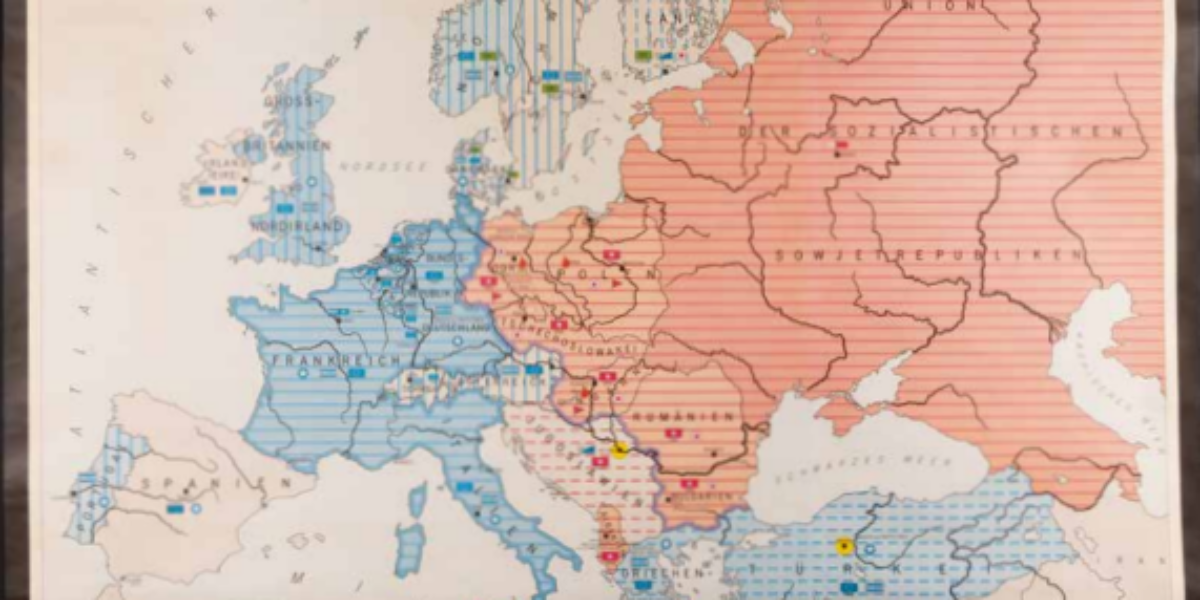
Uprising in East Germany What began in the German Democratic Republic (GDR) as resistance to mandated increases in labour productivity among construction workers escalated into a broader workers’ and peasants’ revolt against the East German government within 24-hours. The resistance was violently suppressed by the Soviet Red Army in a matter of days. In response,…
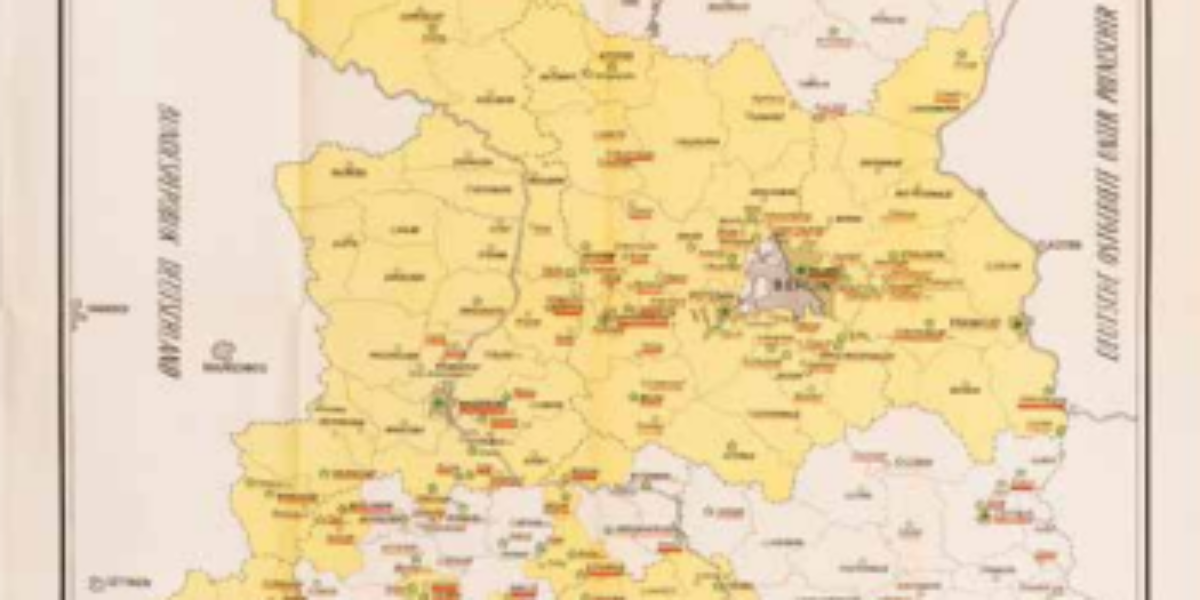
Church opposition to nuclear weapons The Cold War reaches a distressing apex with the emergence of threats involving all-destructive neutron bombs. In the Netherlands, a fervent debate ensued over whether nuclear weapons should be stationed within its borders. Such a move carried the risk of provoking a nuclear attack from the Eastern bloc, in turn…
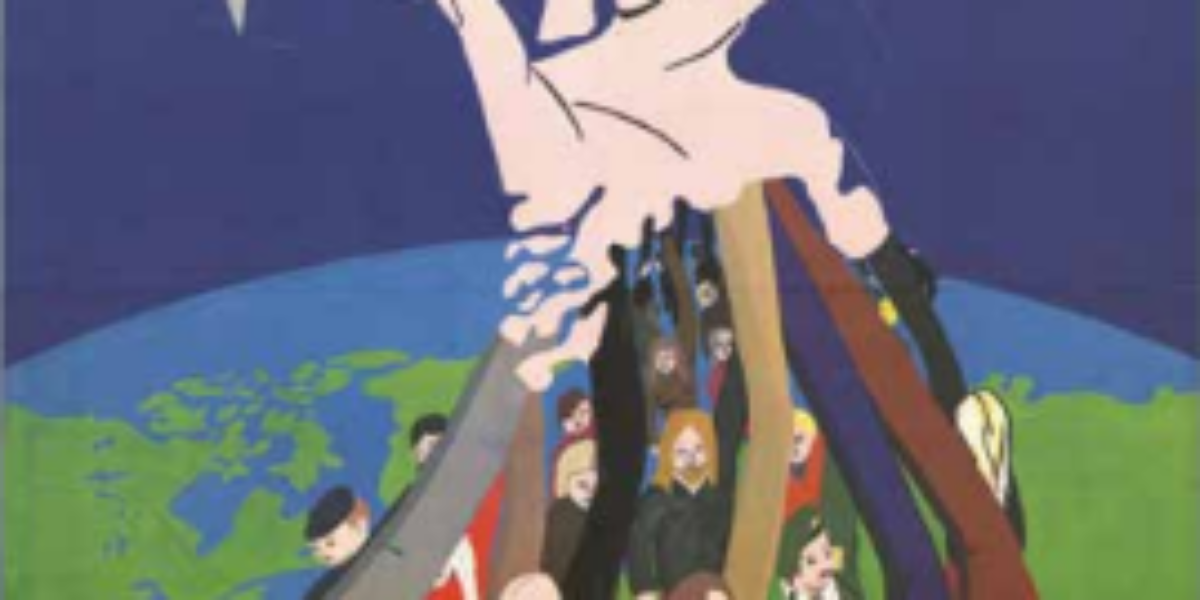
Aesthetics of military maps: Riga When this six-sheet map was printed in Leningrad, Riga was still a part of the Soviet Union. In contrast to maps of cities beyond the borders of the Soviet Union and its satellite states, this map boasts a higher degree of accuracy. It meticulously notes various details, including river flows,…
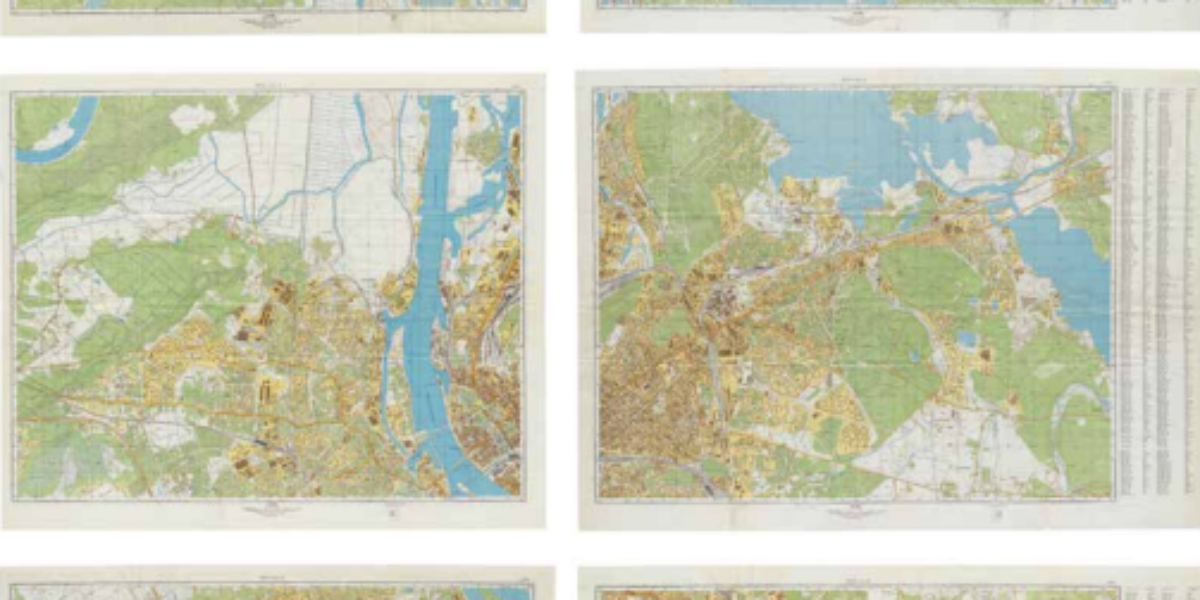
United States as (sole) world power For years there has been a prevailing perception among politicians, experts, and journalists that the era of the United States as a global superpower is waning. China has emerged as a prominent new global player, and the world is shifting towards a multipolar state system. As of now, the…
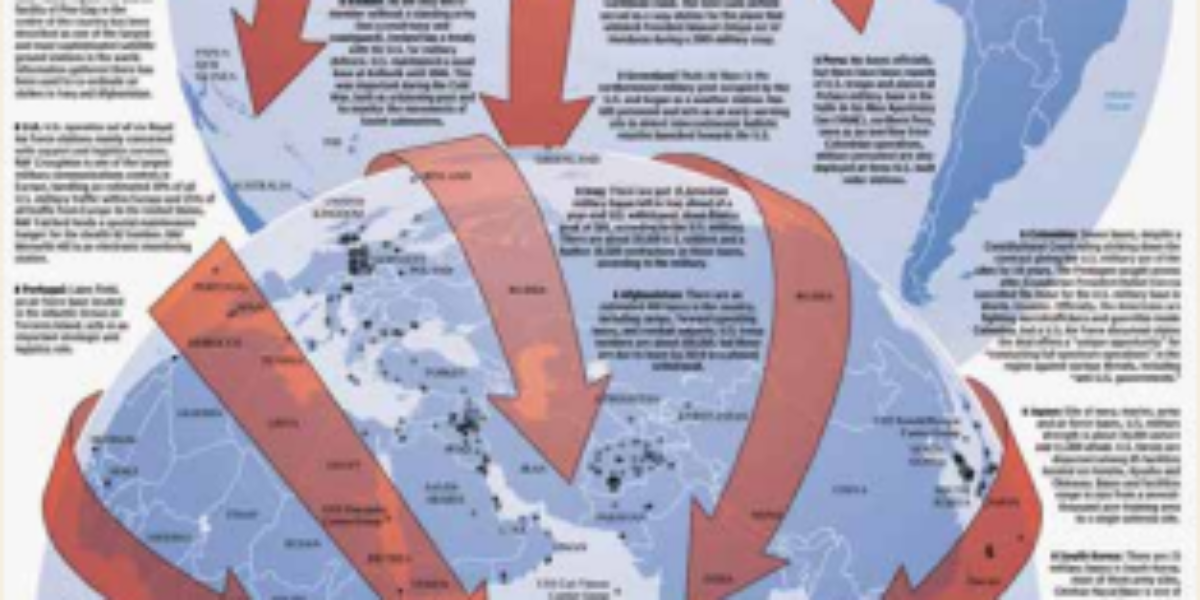
Subtle differences in Europe This map of the European Union from 2013 may appear quite ordinary, displaying an austere, objective, and institutional representation. It emphasises Estonia’s smallest province while deeming mountains insignificant. However, beneath this surface lies a subtle message: The map highlights the Union’s commitment to multilingualism by labelling all countries with their respective…
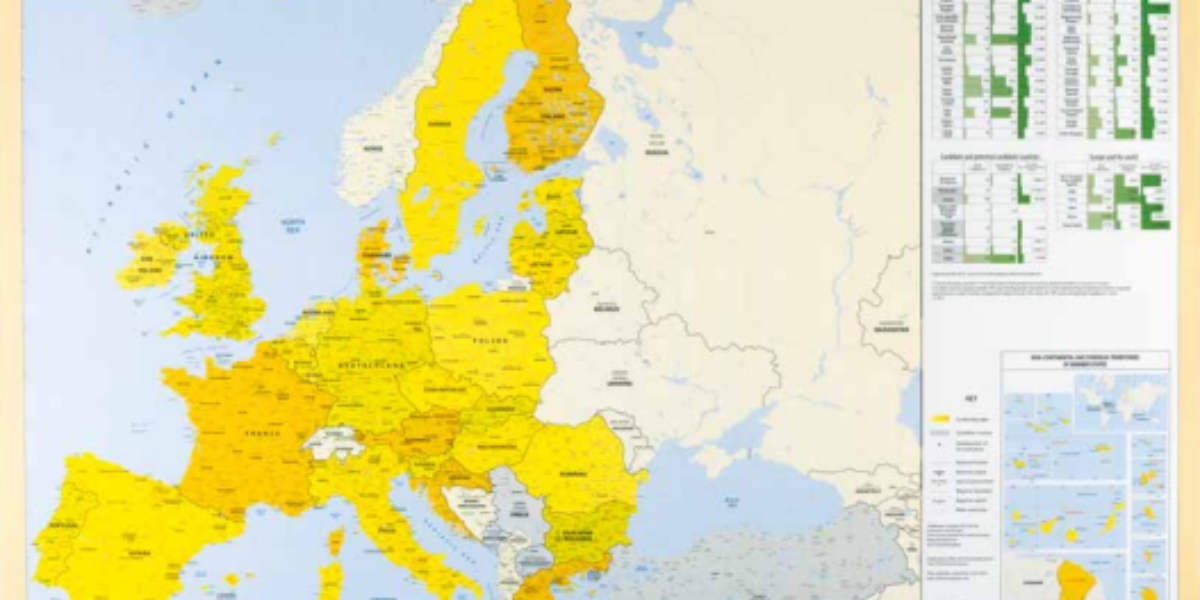
Brexit referendum divides Britons The map in the middle is a familiar geographical depiction of the UK. It suggests that the majority, especially in Scotland, leans towards remaining in the European Union, as indicated by the dominance of yellow over blue. However, the map on the left depicts electoral accuracy, while the one on the…
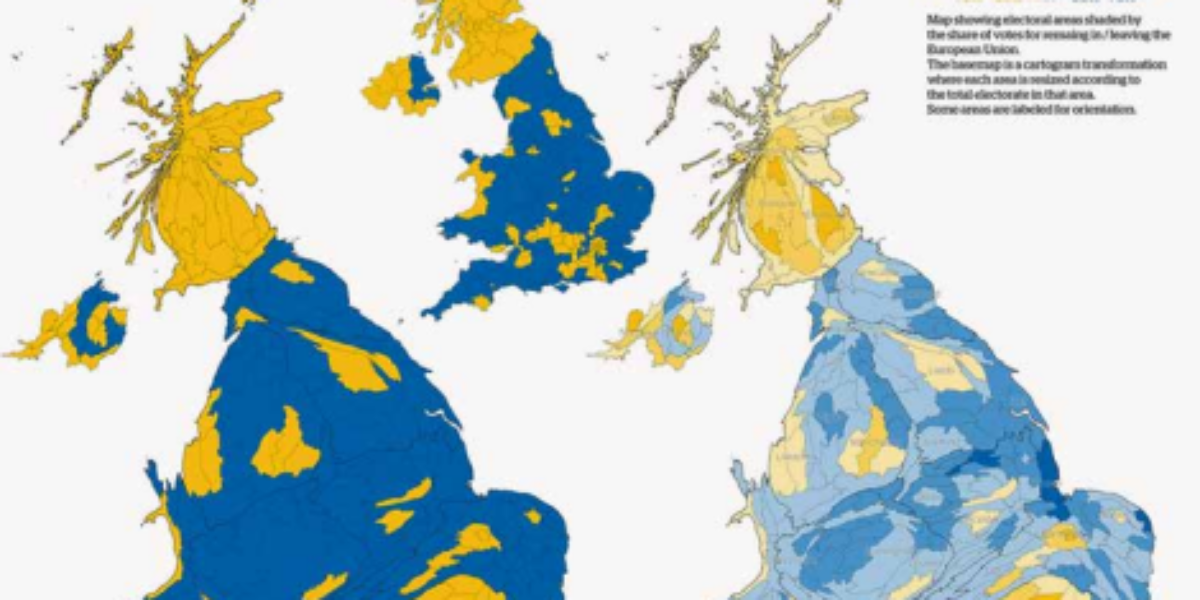
Nitrogen map causes farmers‘ revolt The question of how livestock farming in the Netherlands aligns with European environmental regulations has been an issue for decades. For many livestock farmers, a degree of reassurance could still be drawn from the 2017 Nitrate Map (21b), which depicts surface water quality. However, the June 2022 ‘nitrogen map’ that…
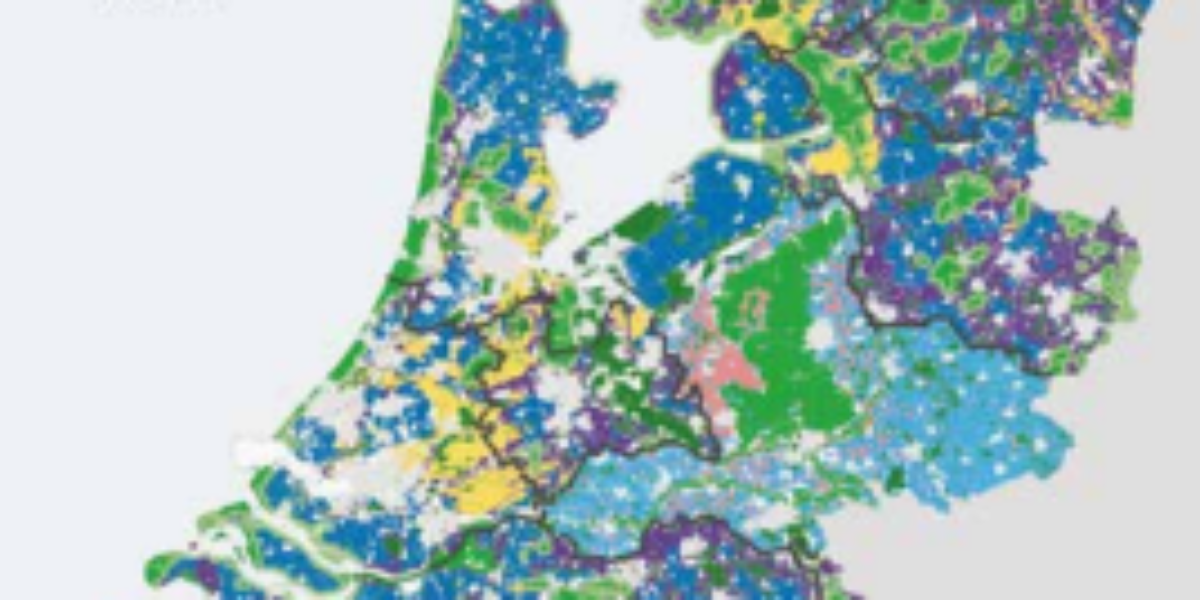
Loan Favan – TANEM FIUJA
Loan Favan was commissioned by Design Museum Den Bosch to create TANEM FIUJA, a series of jewellery and ornaments in which she speculates about the future of humanity.

